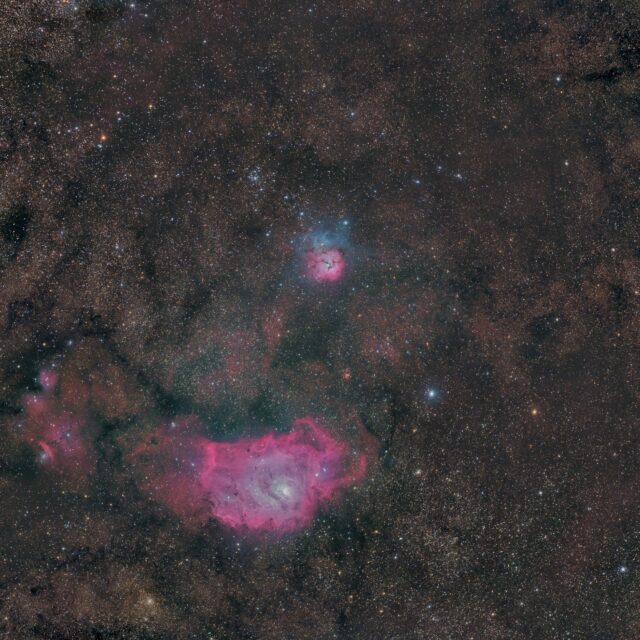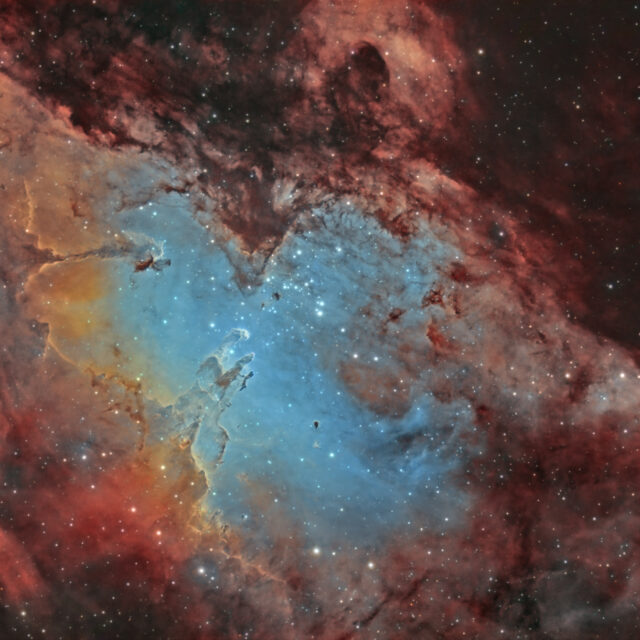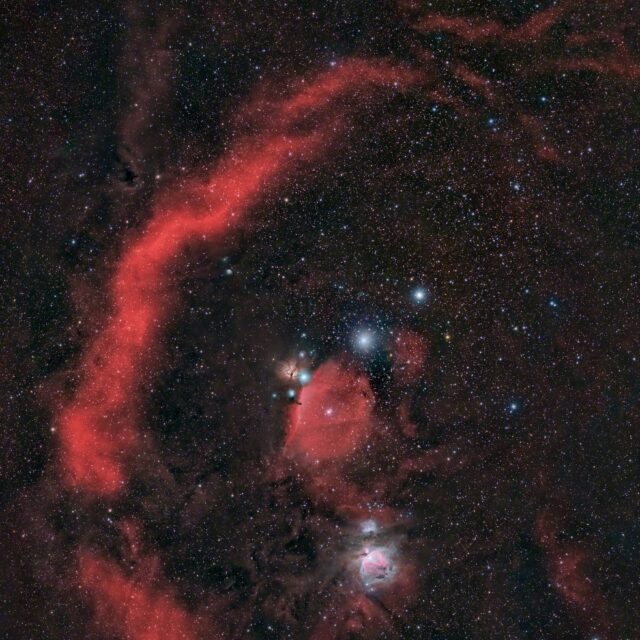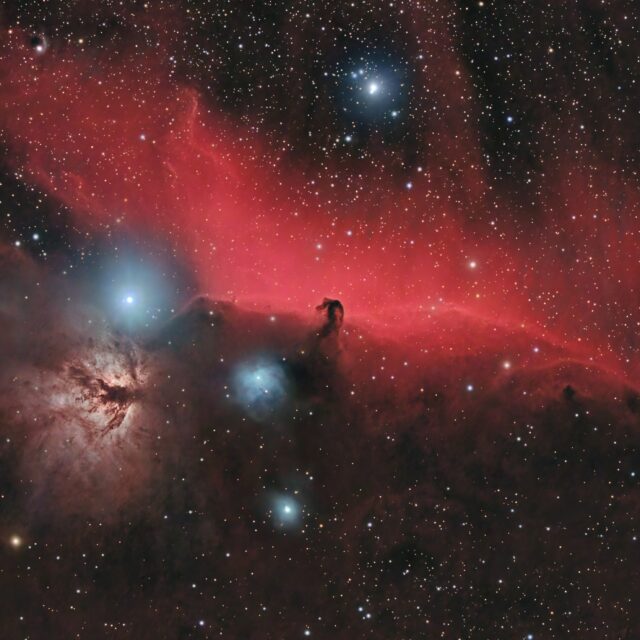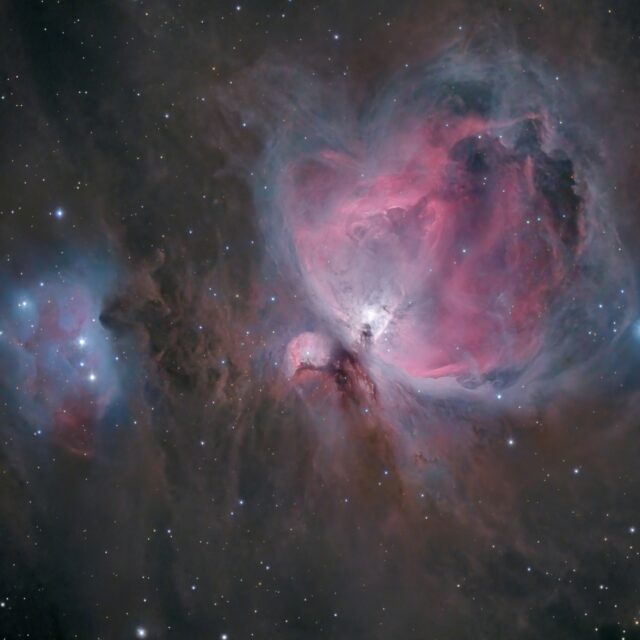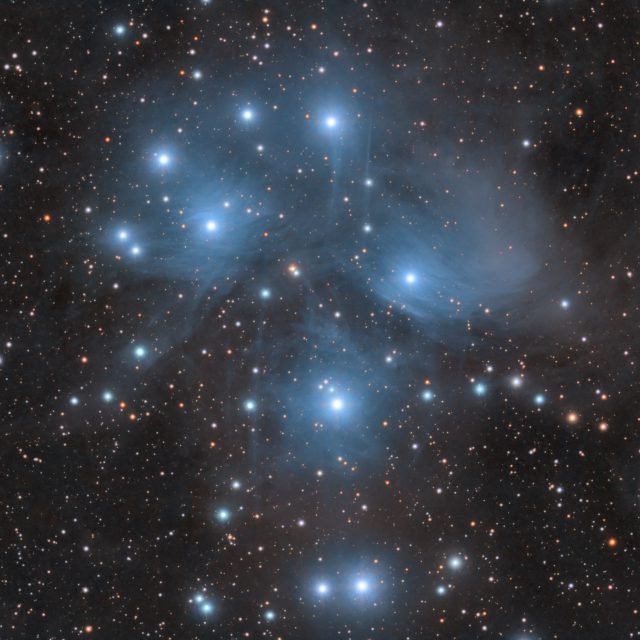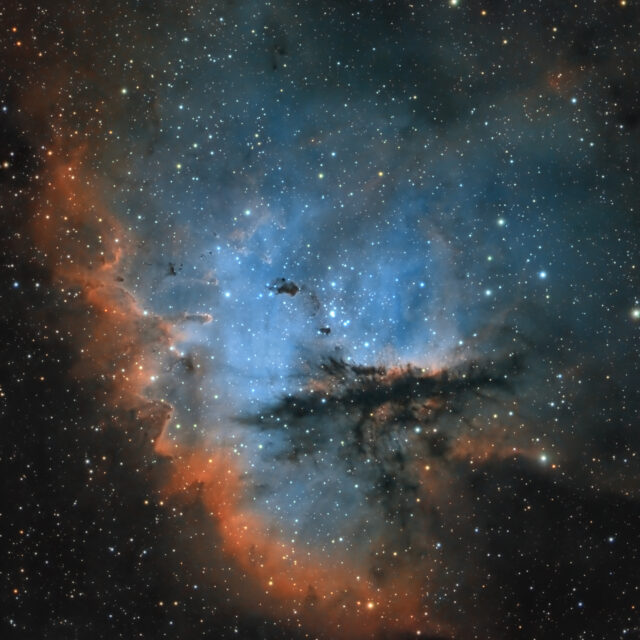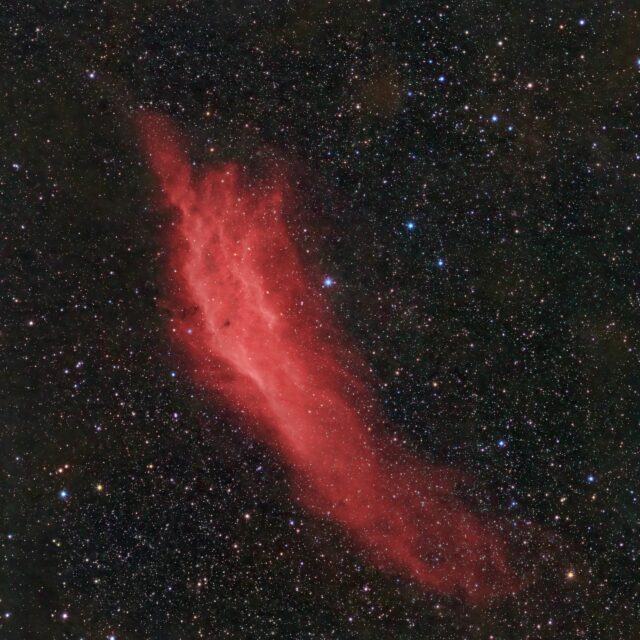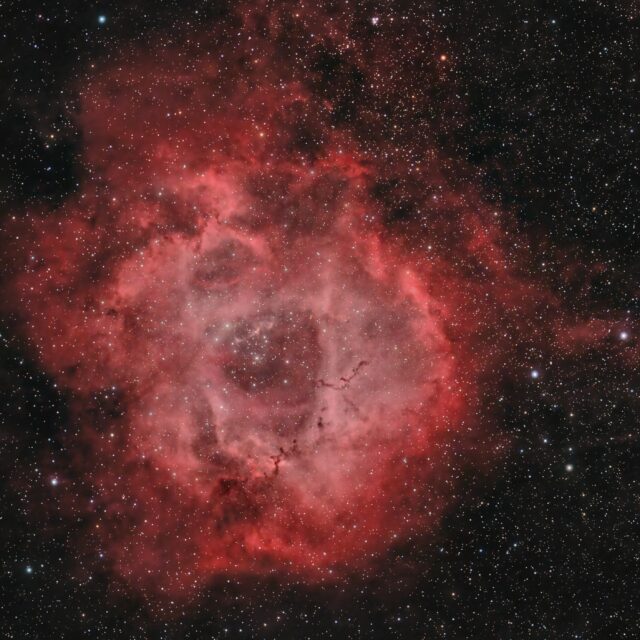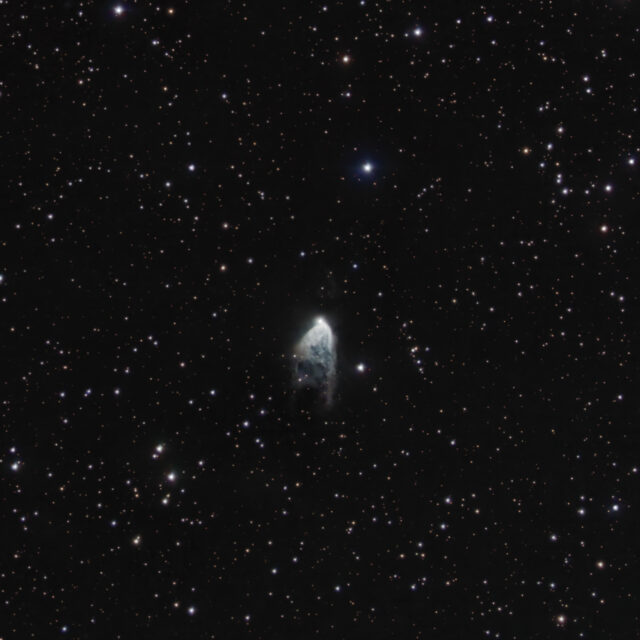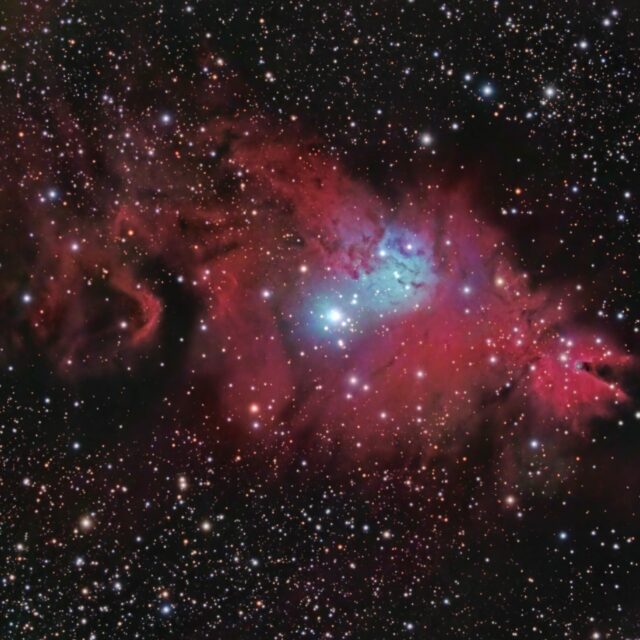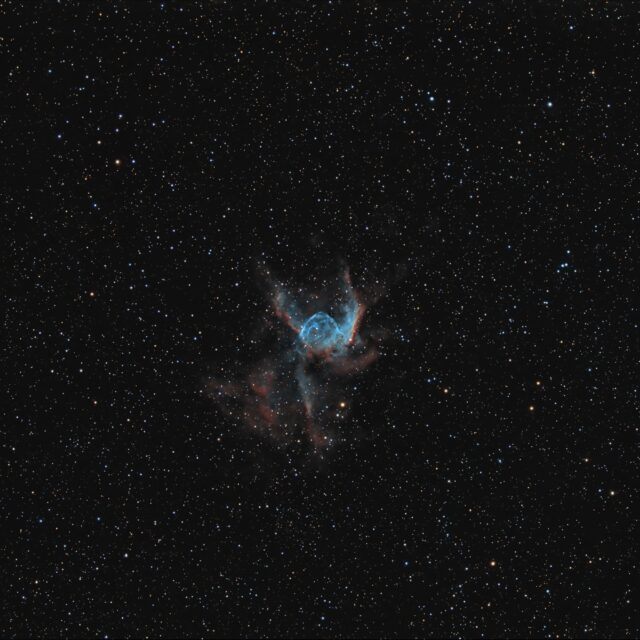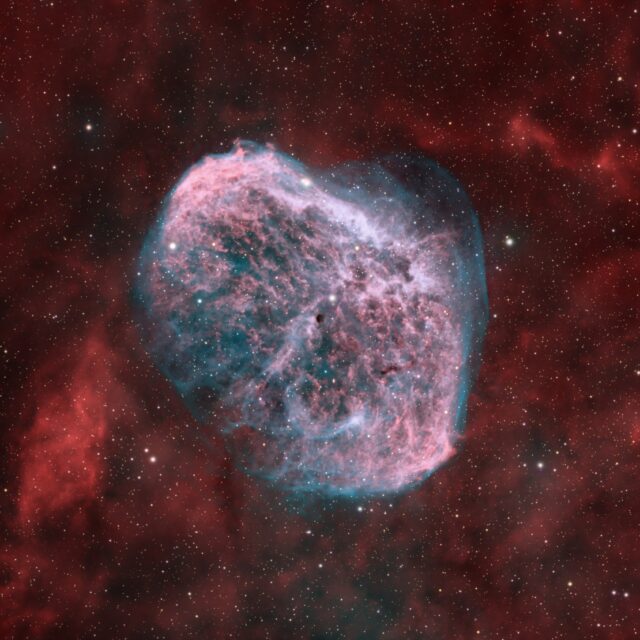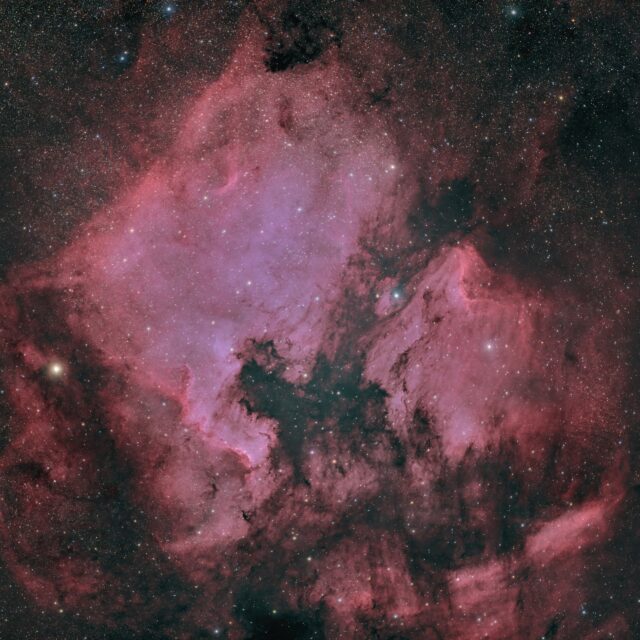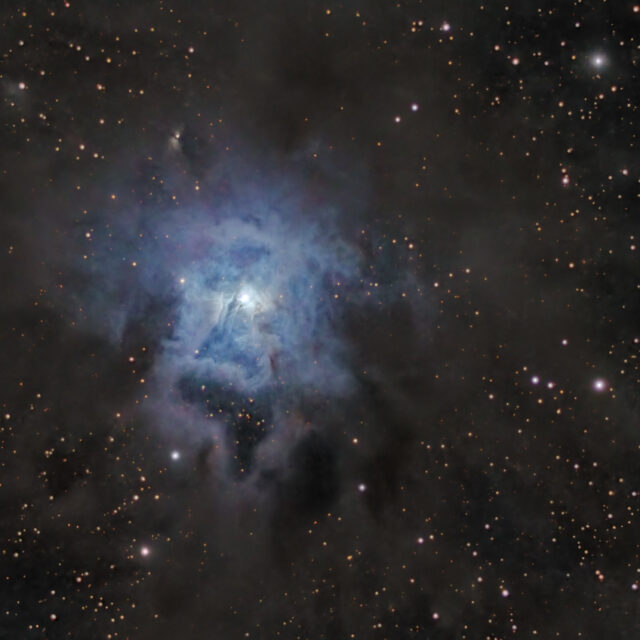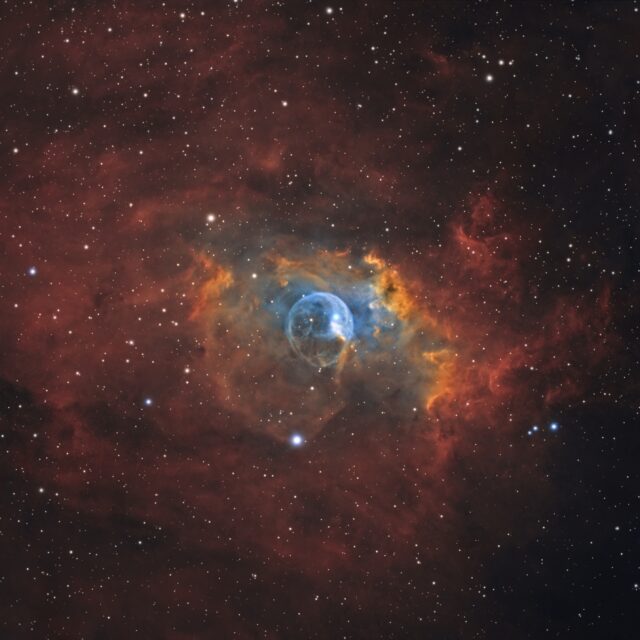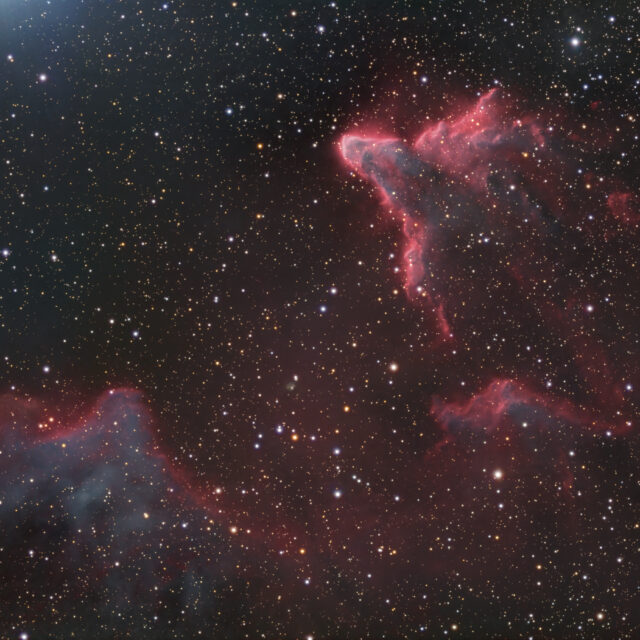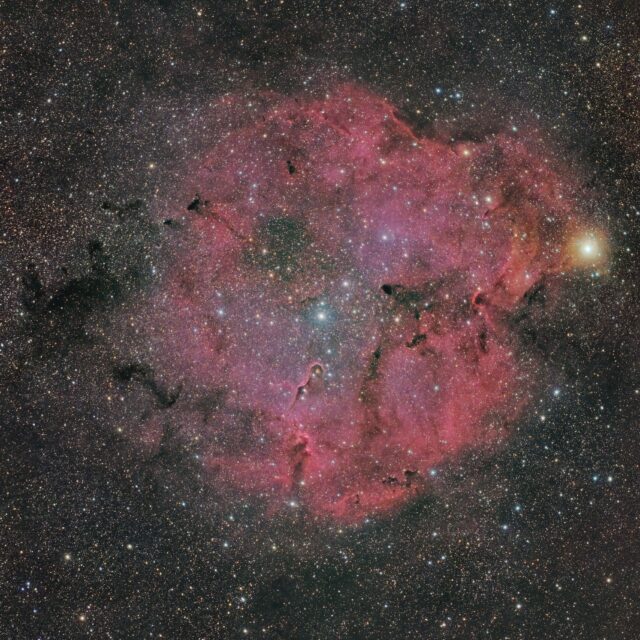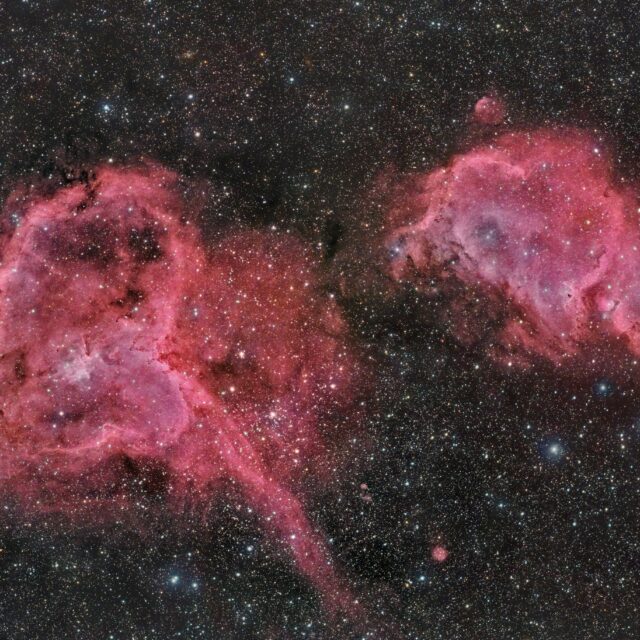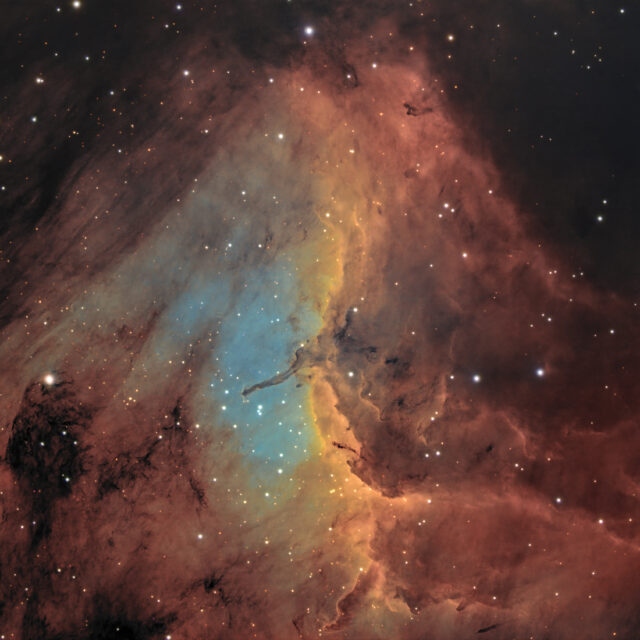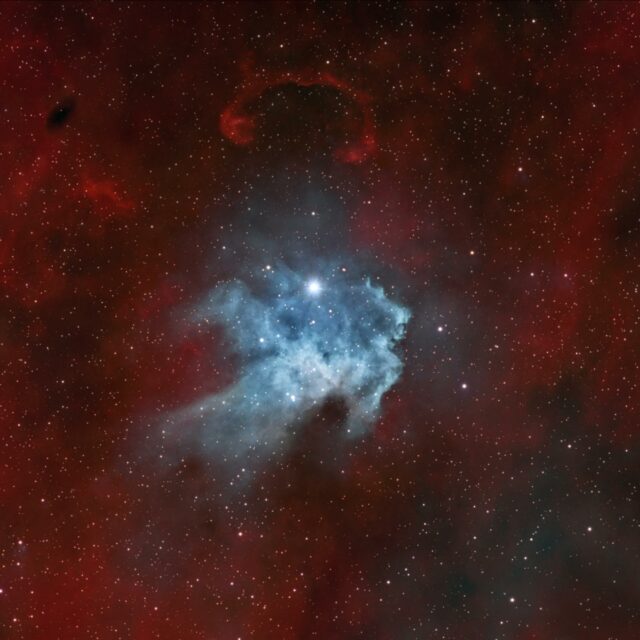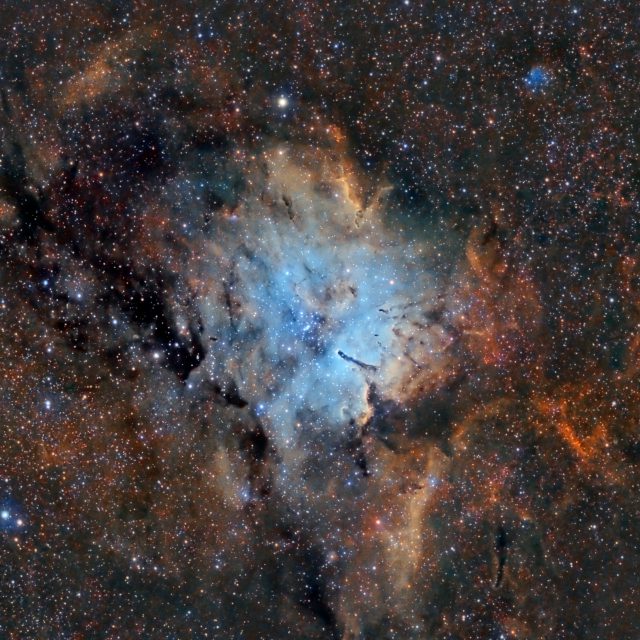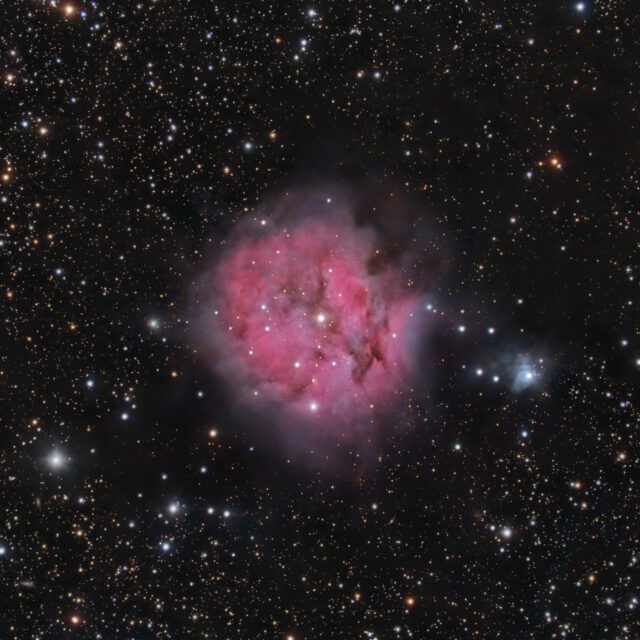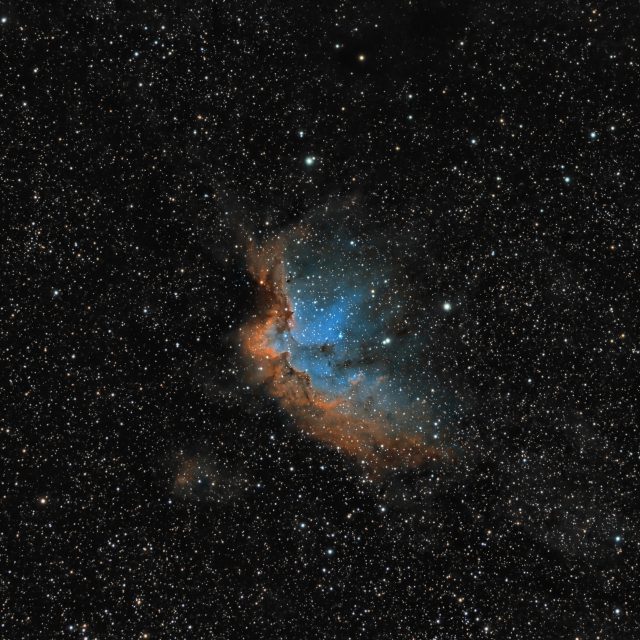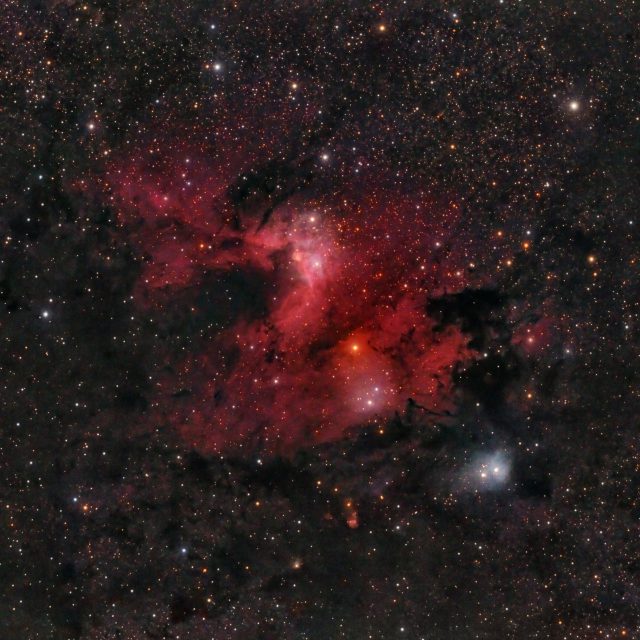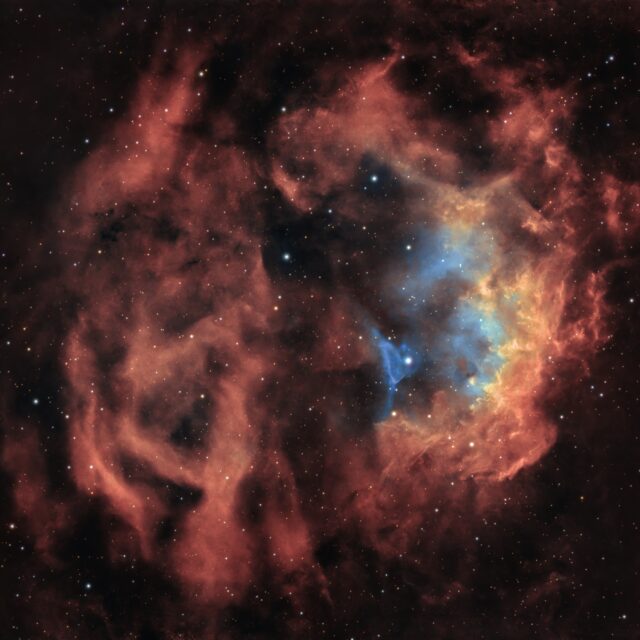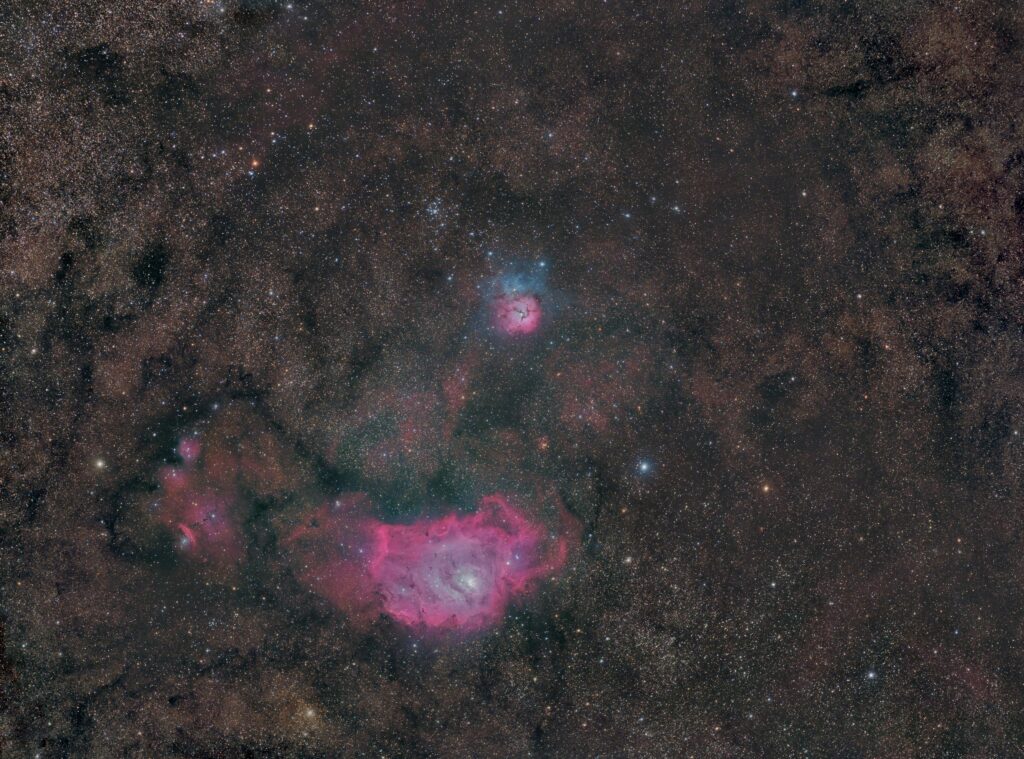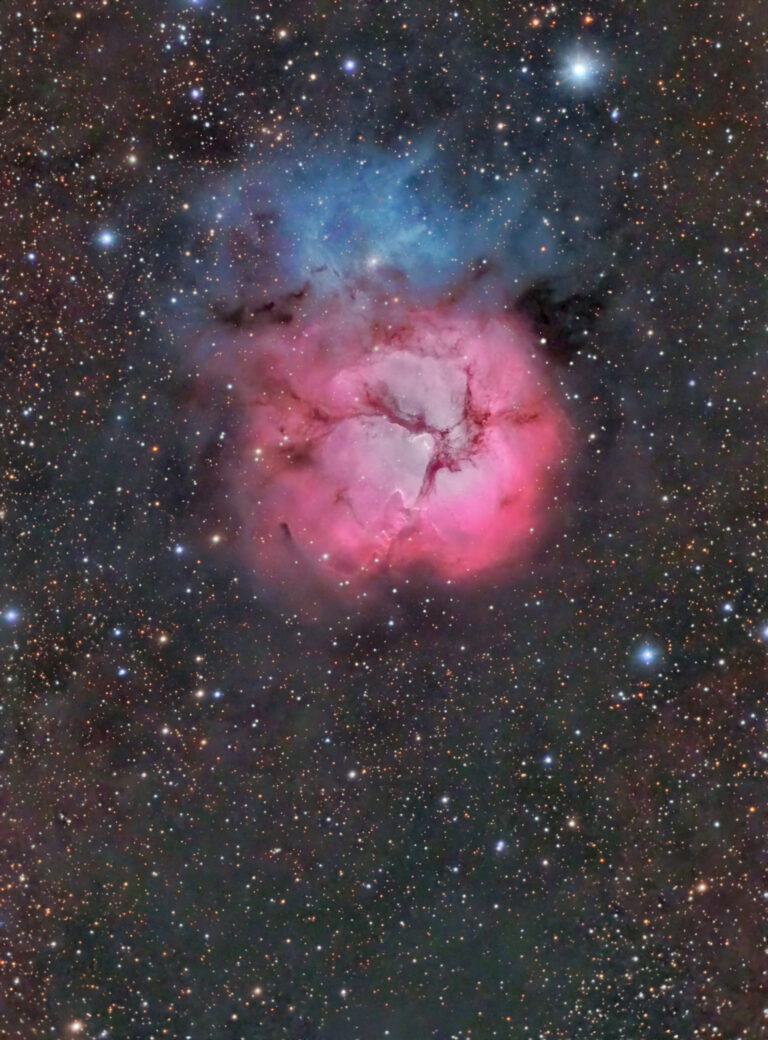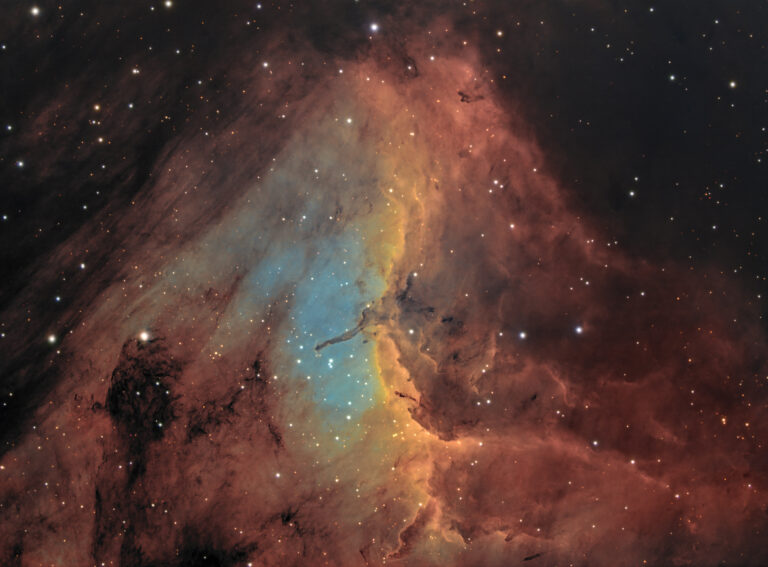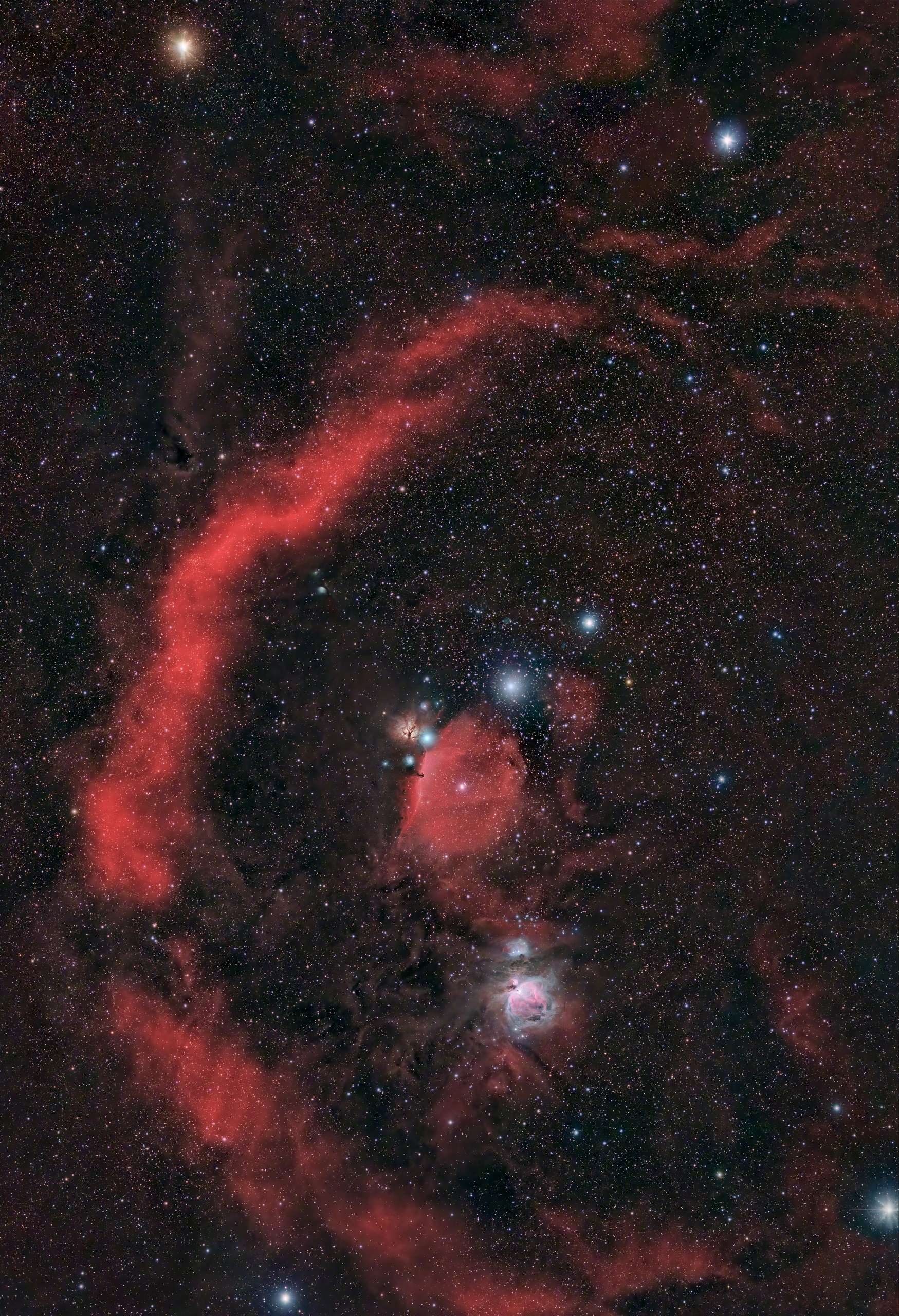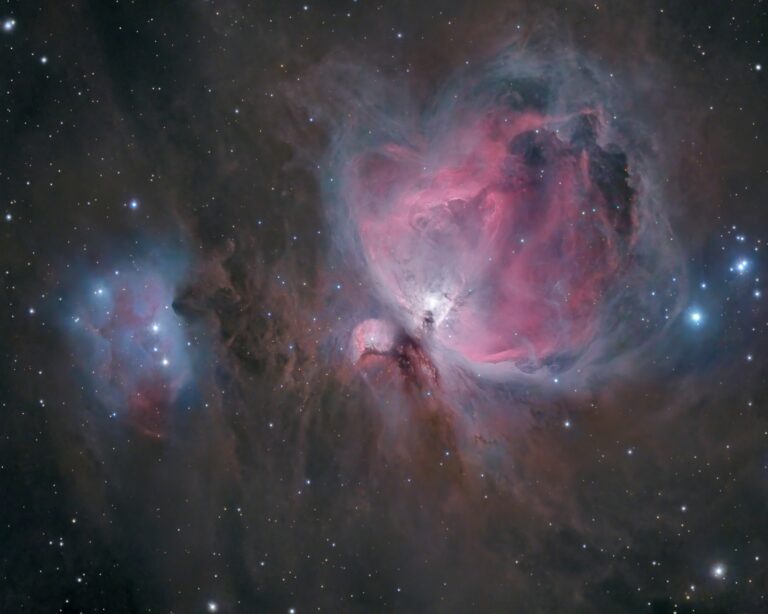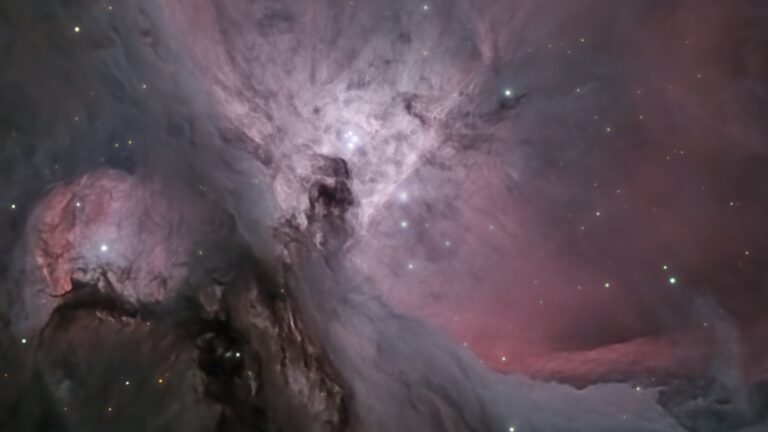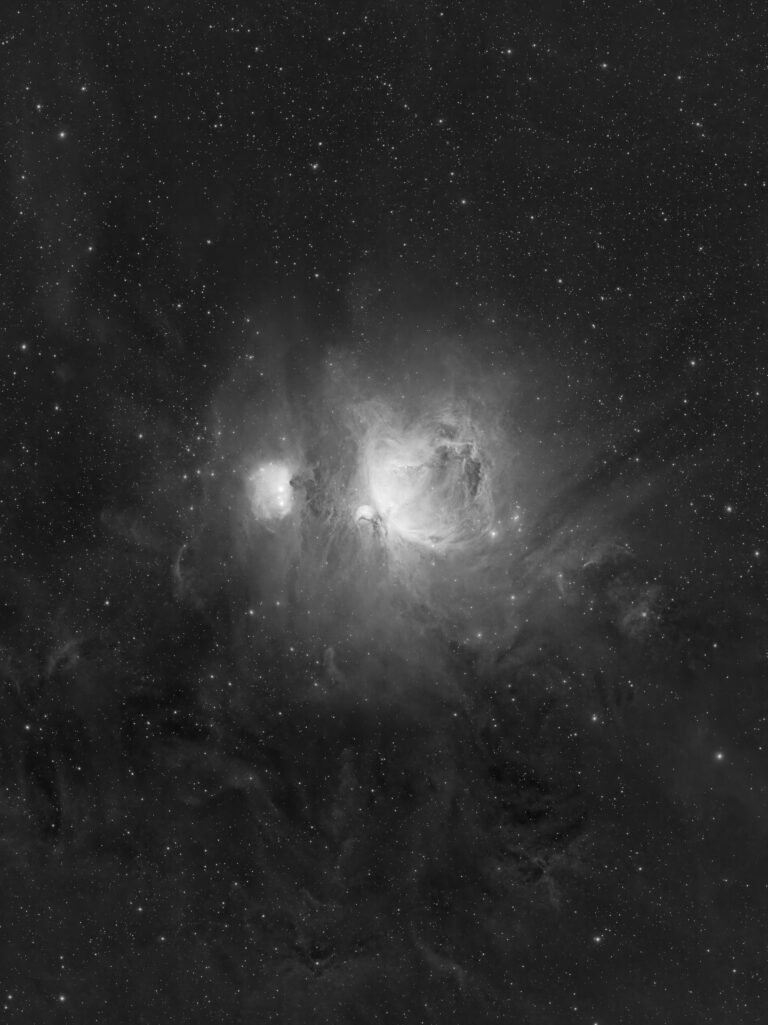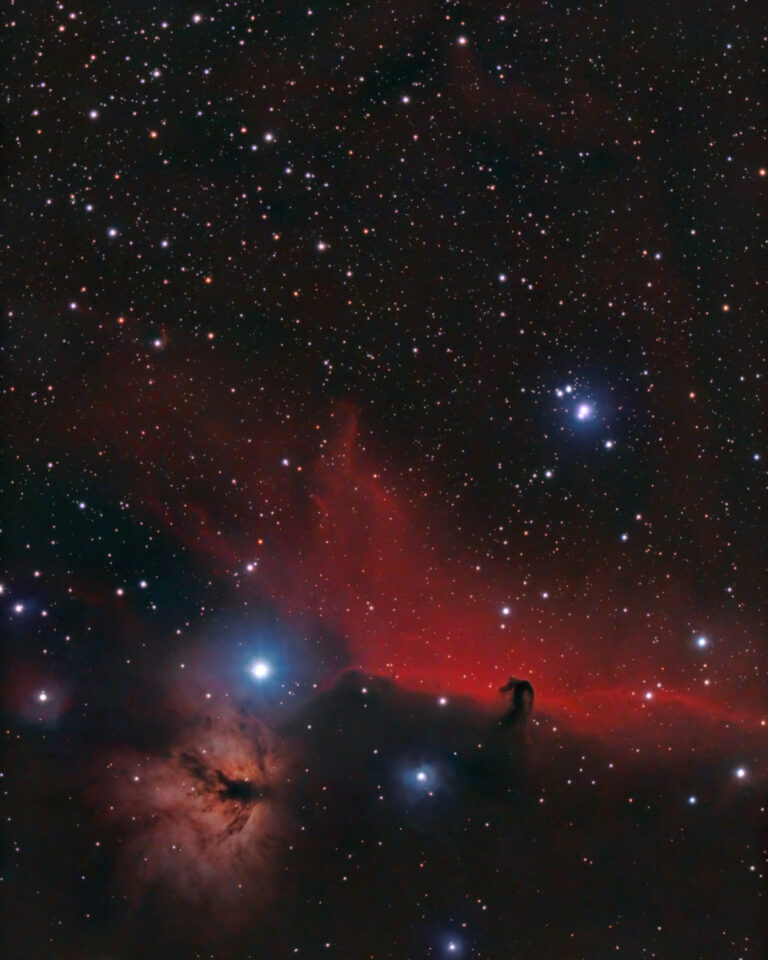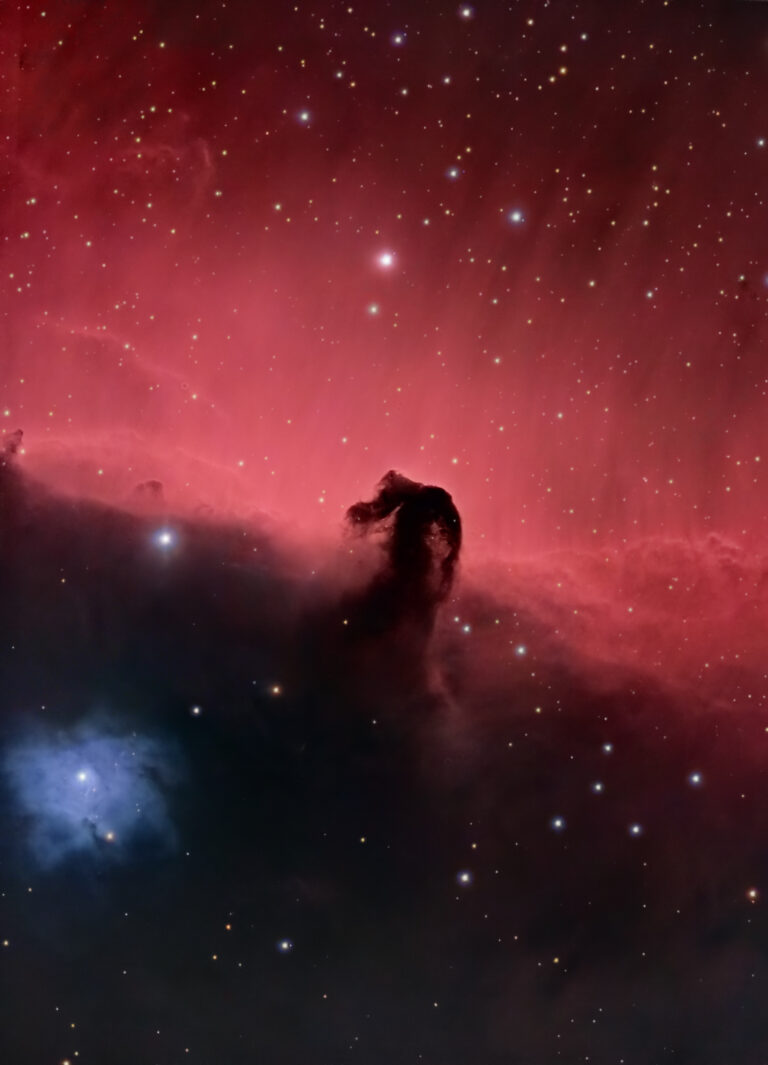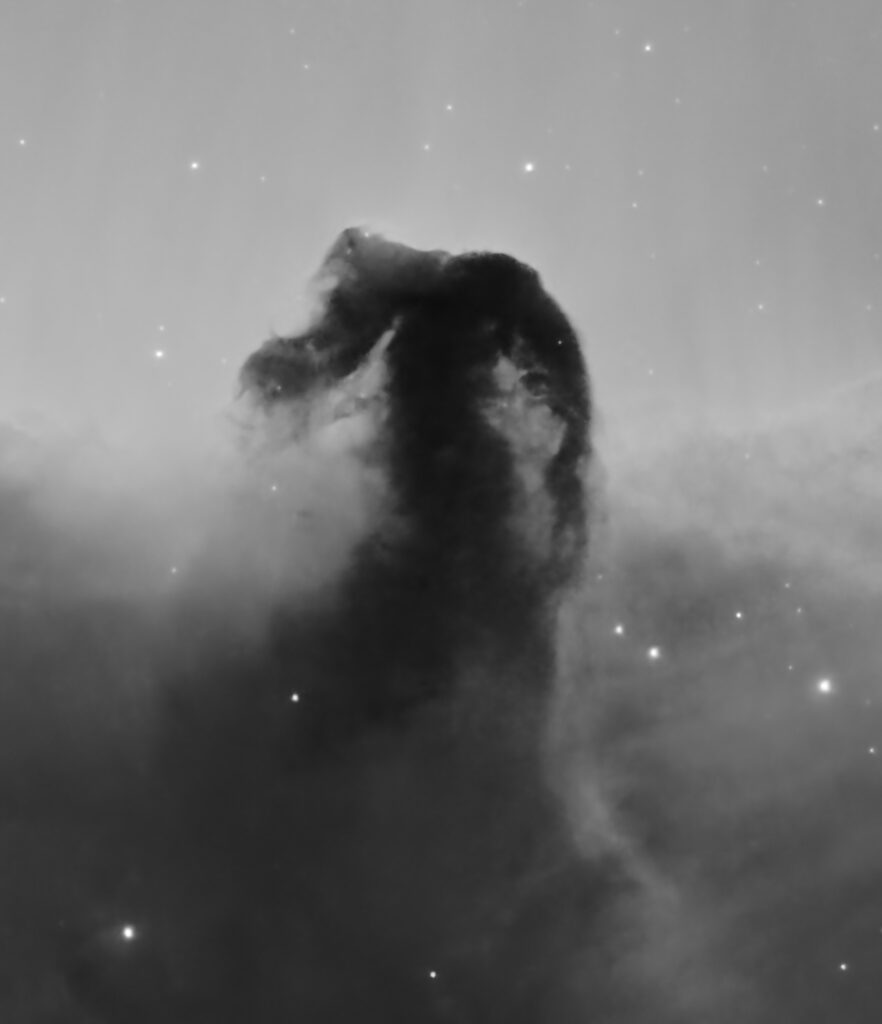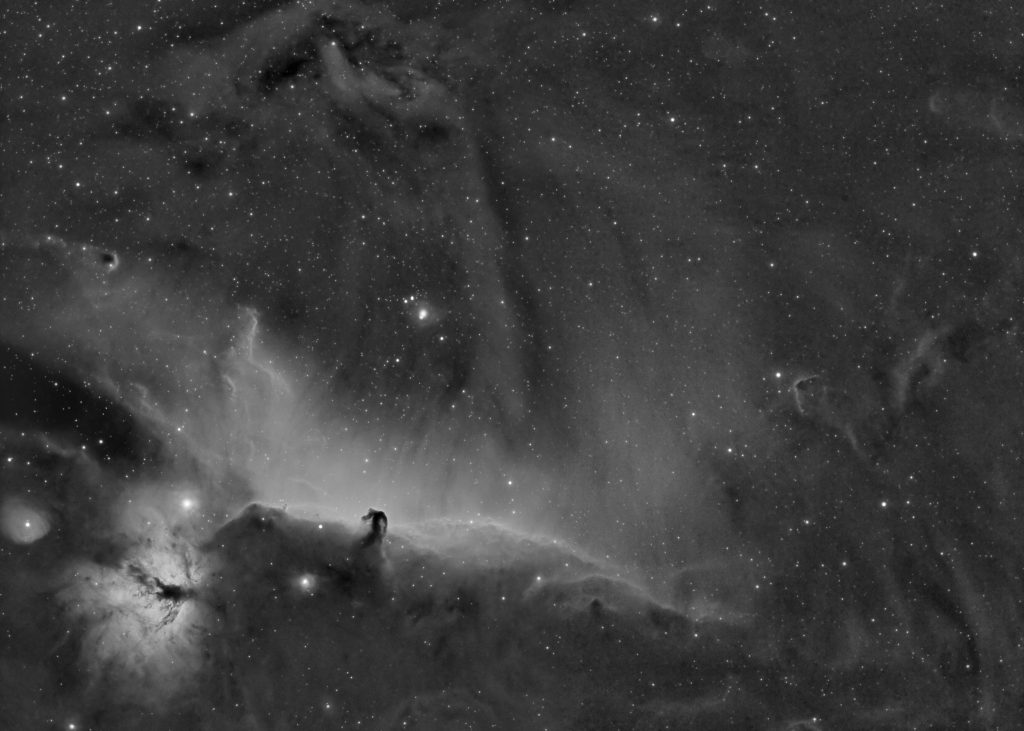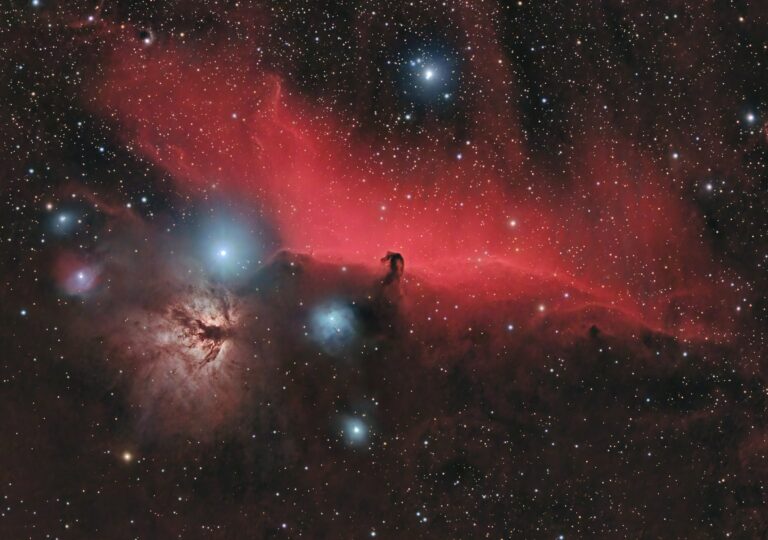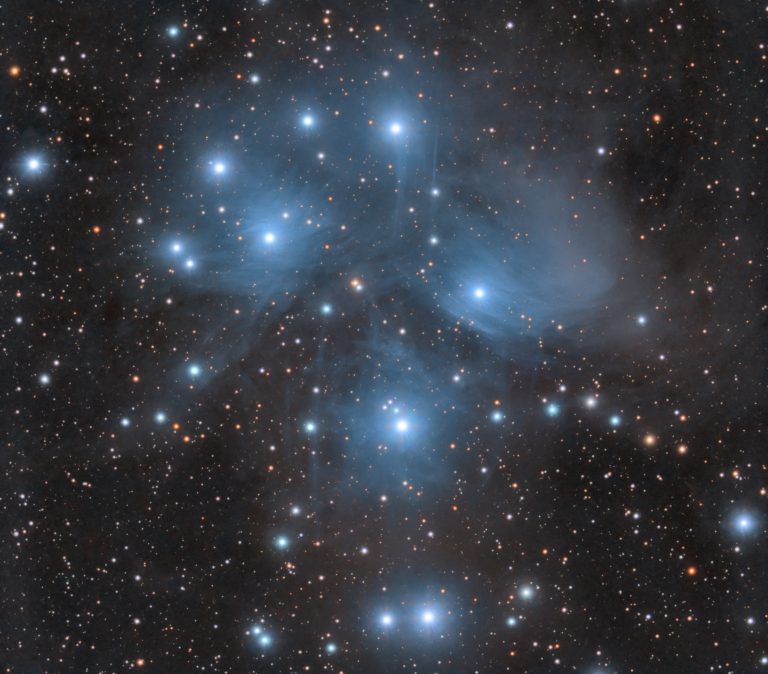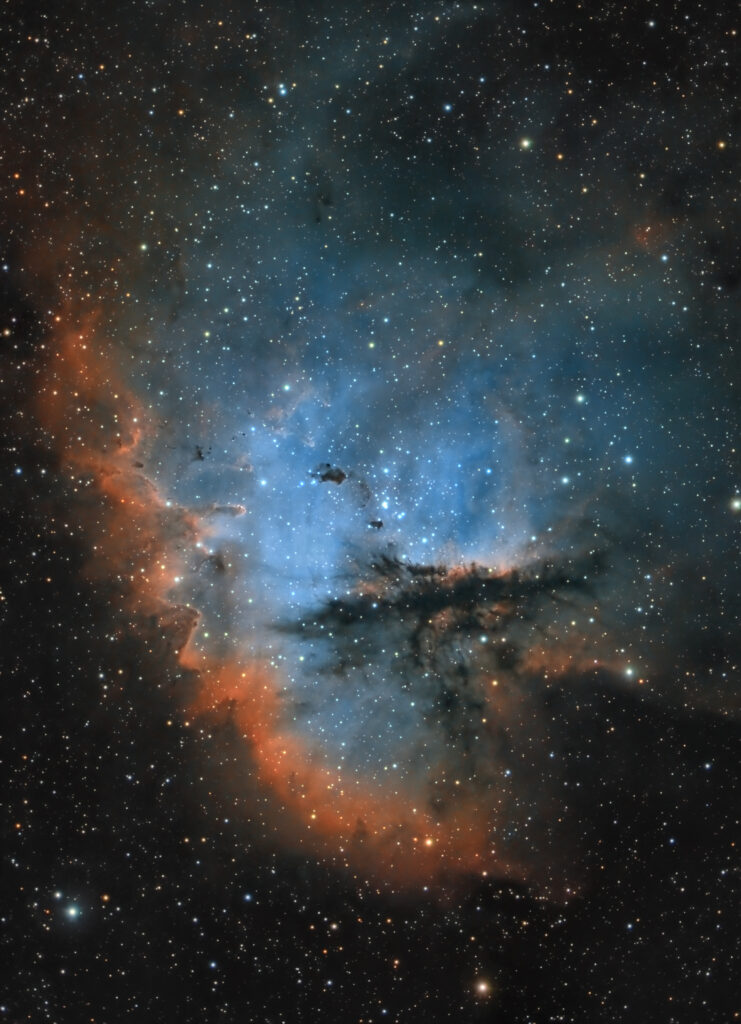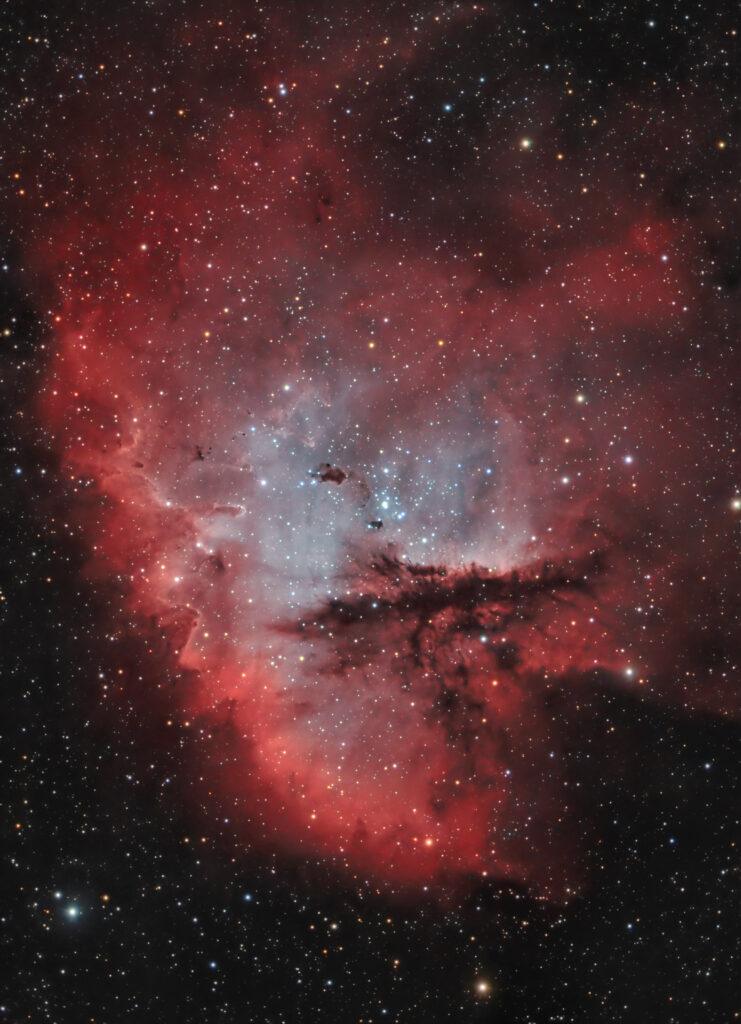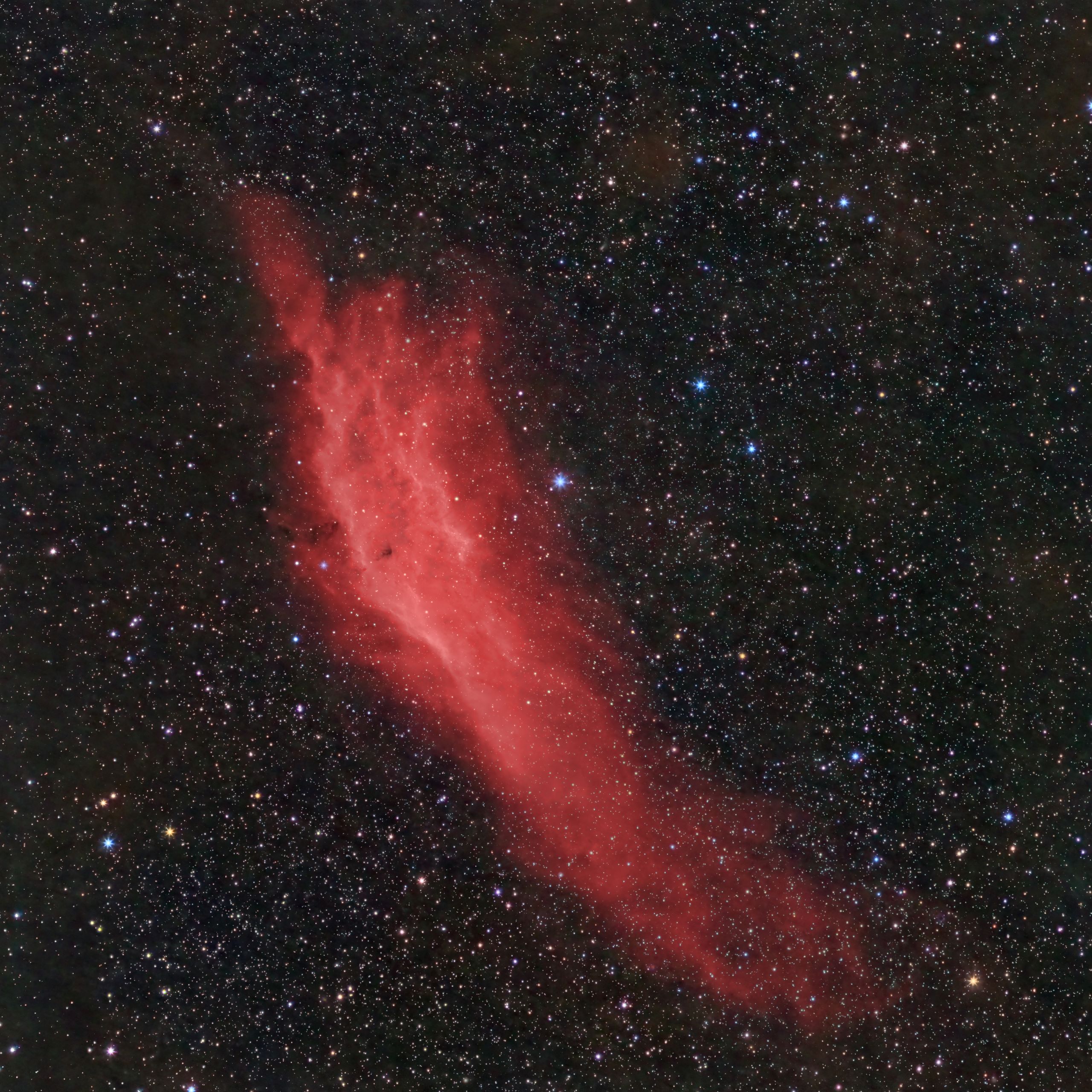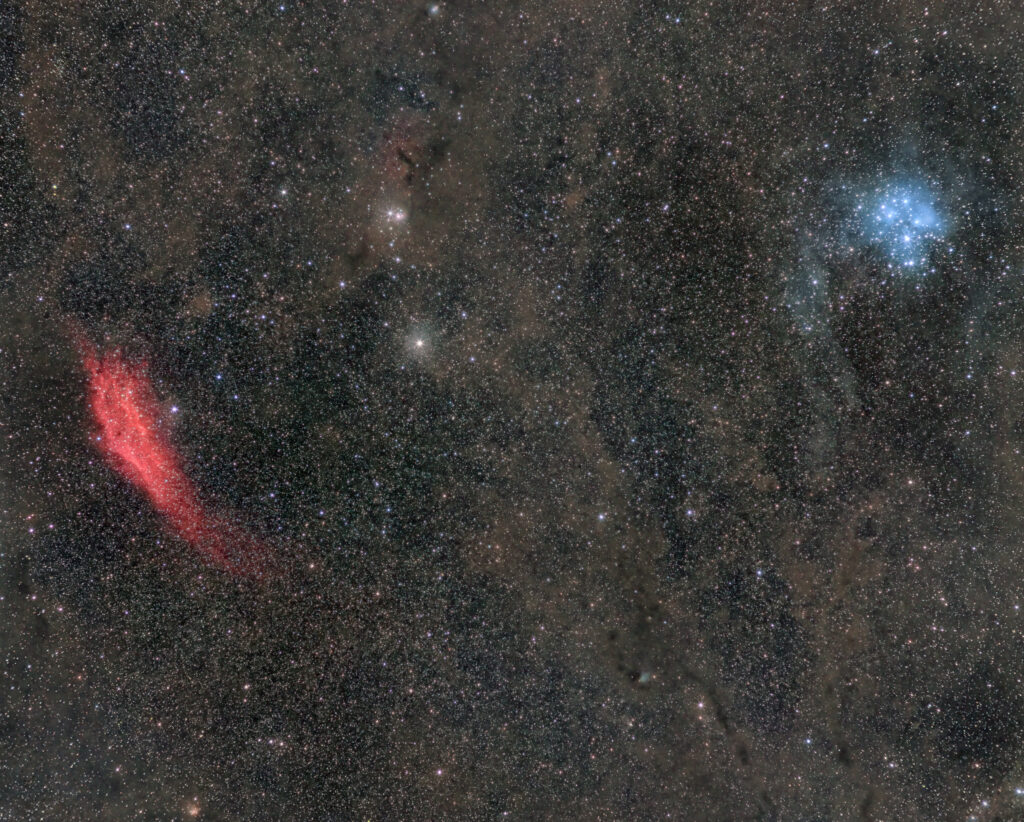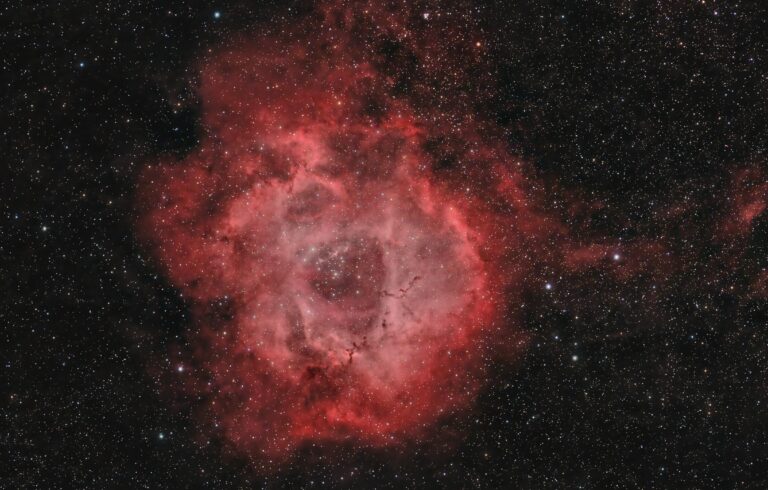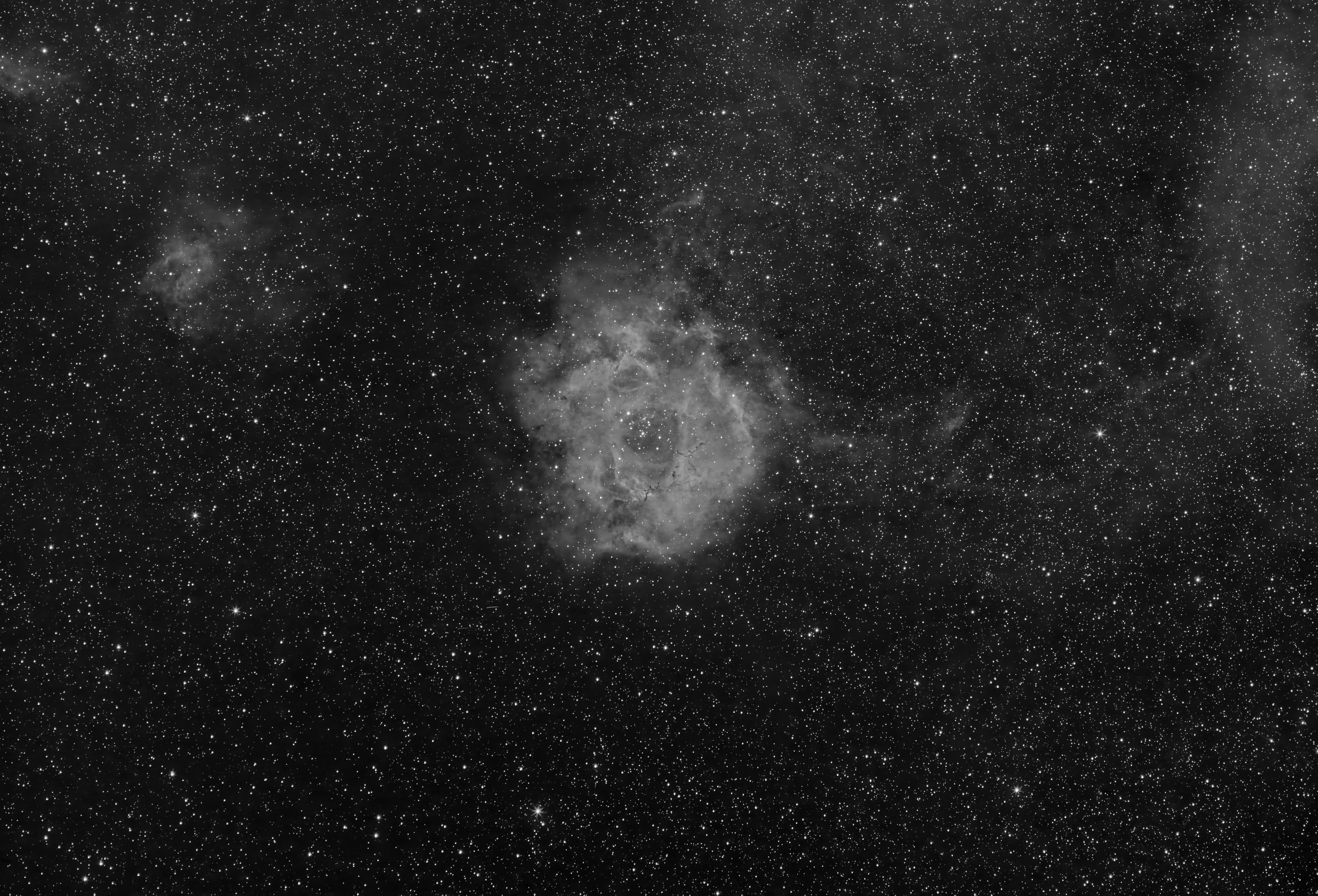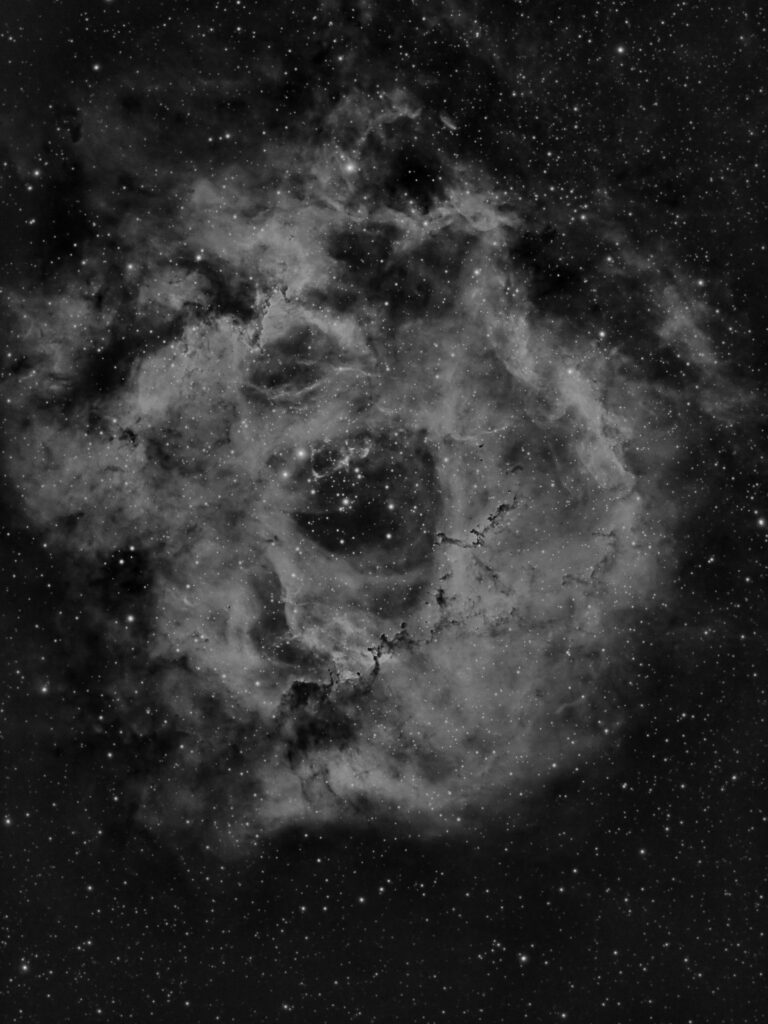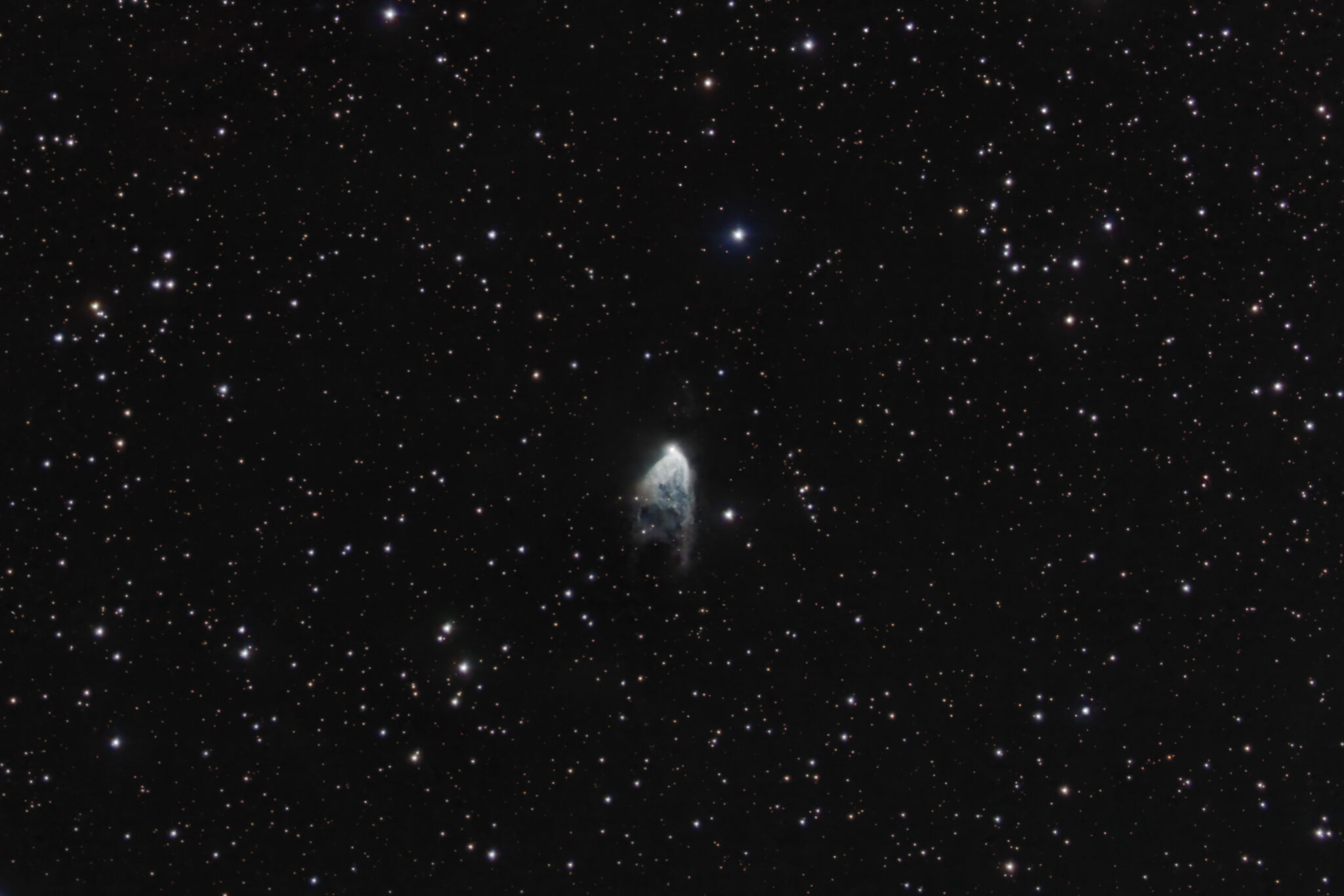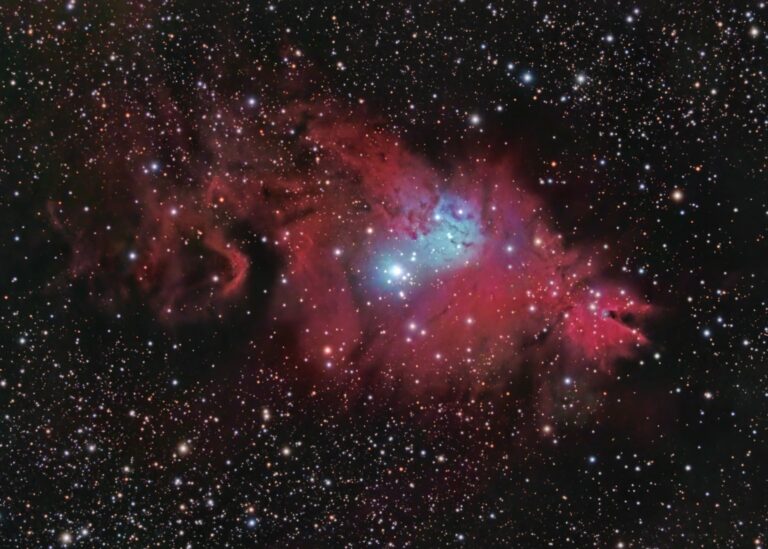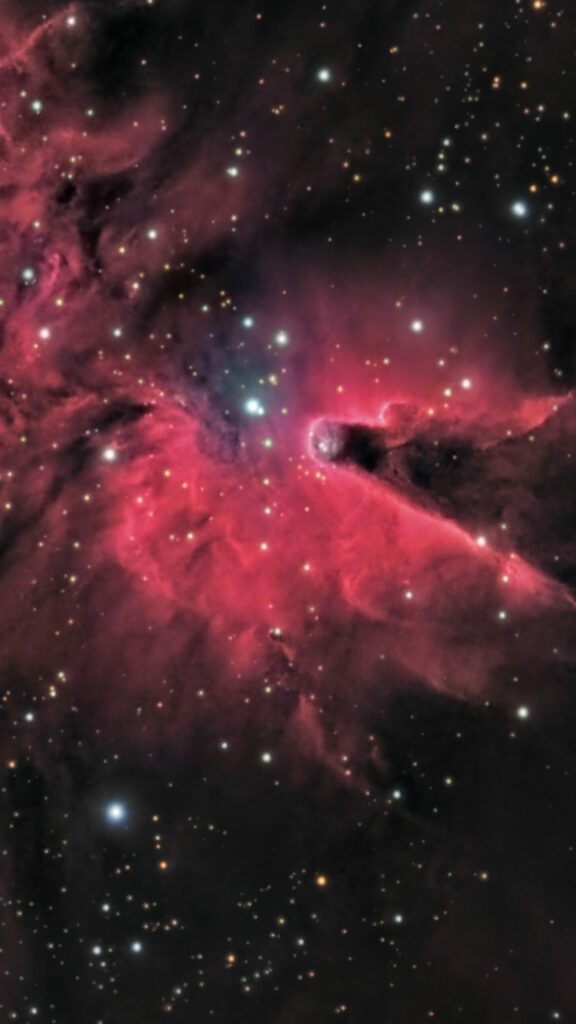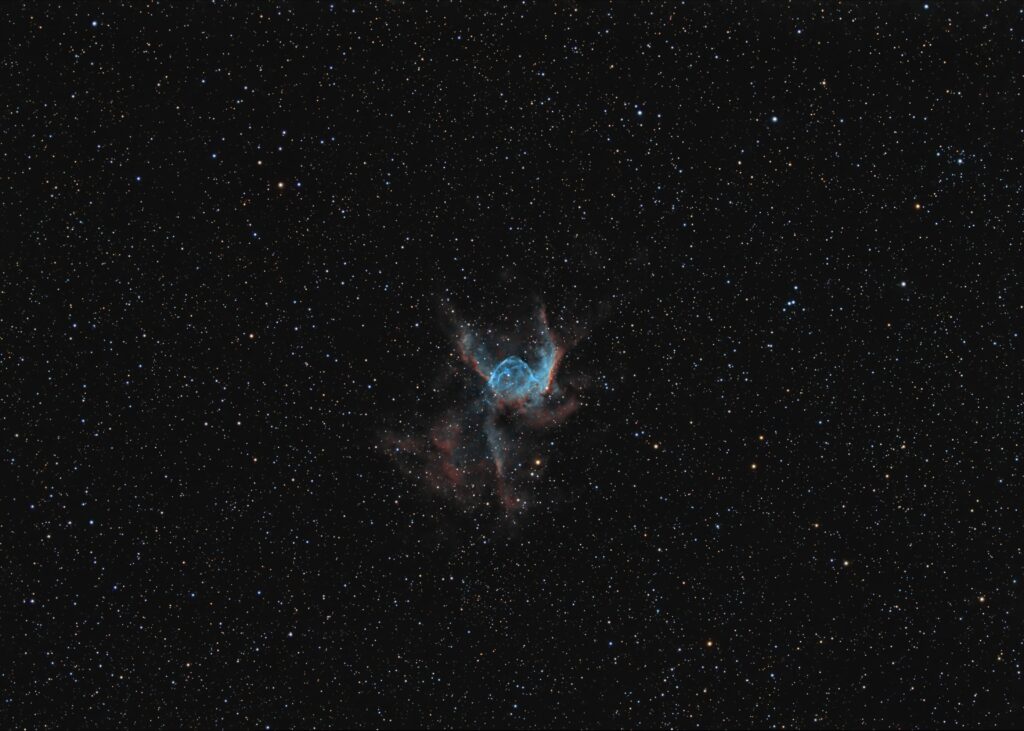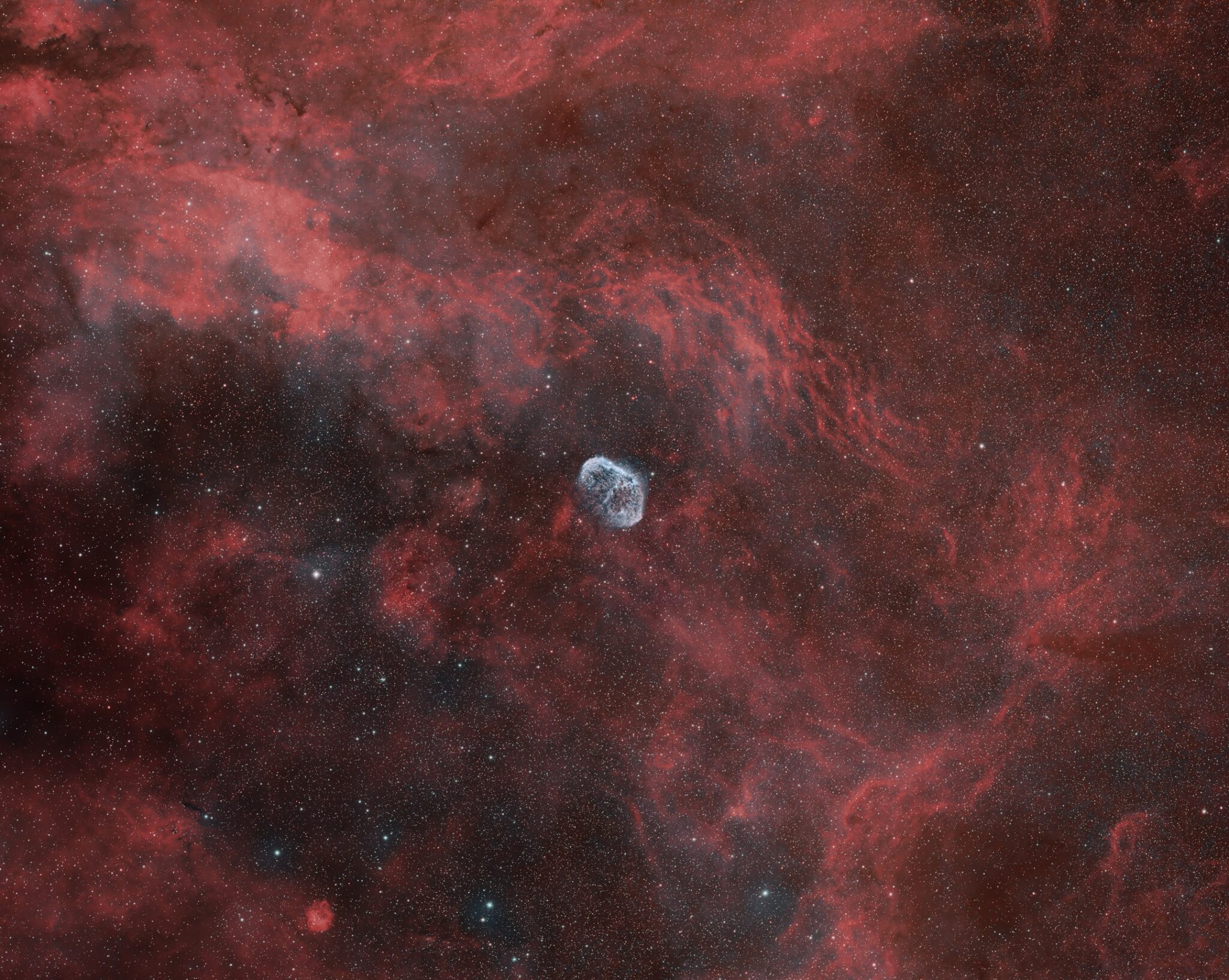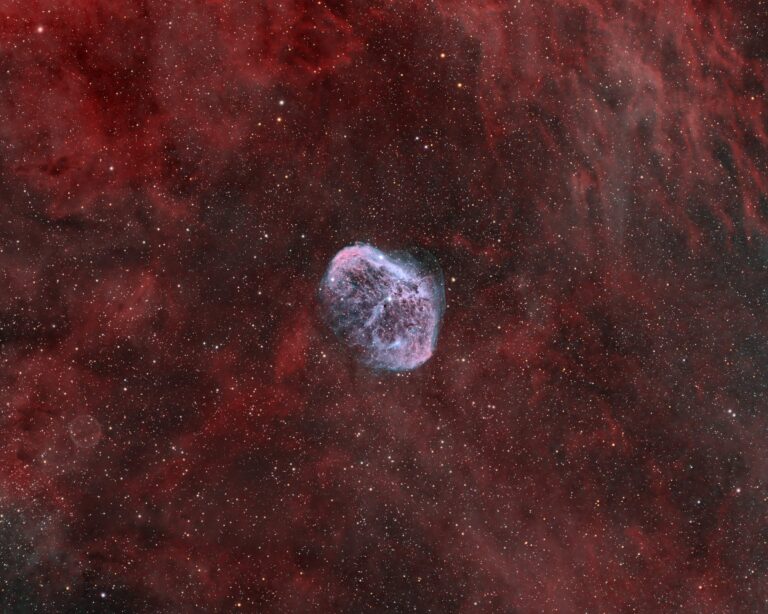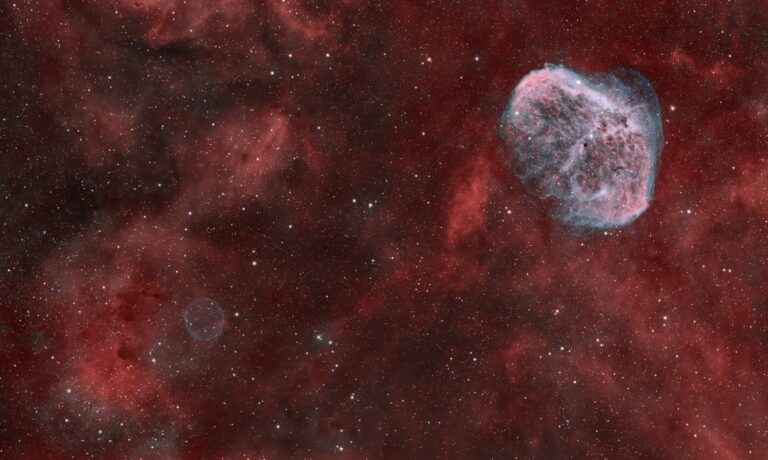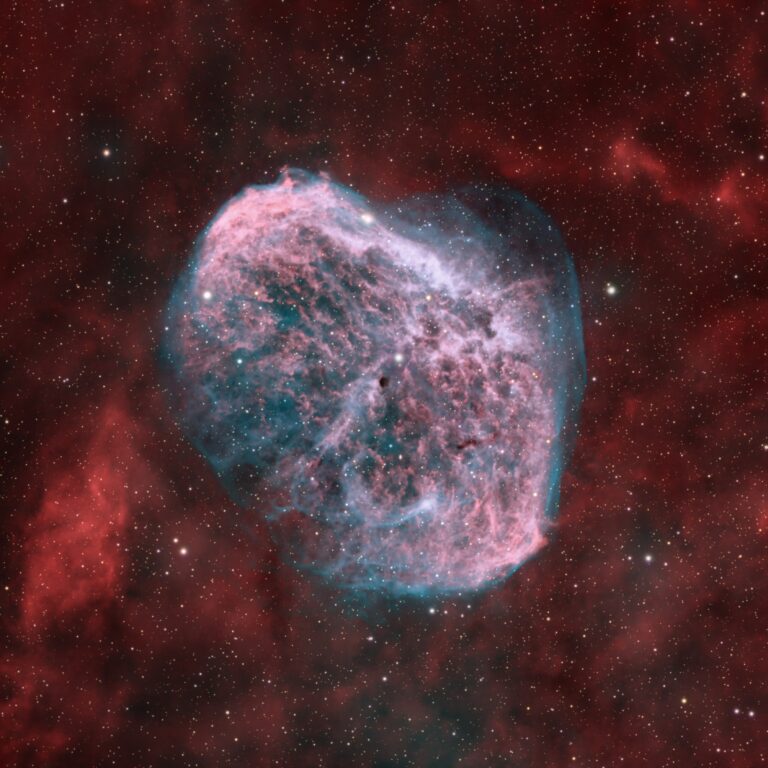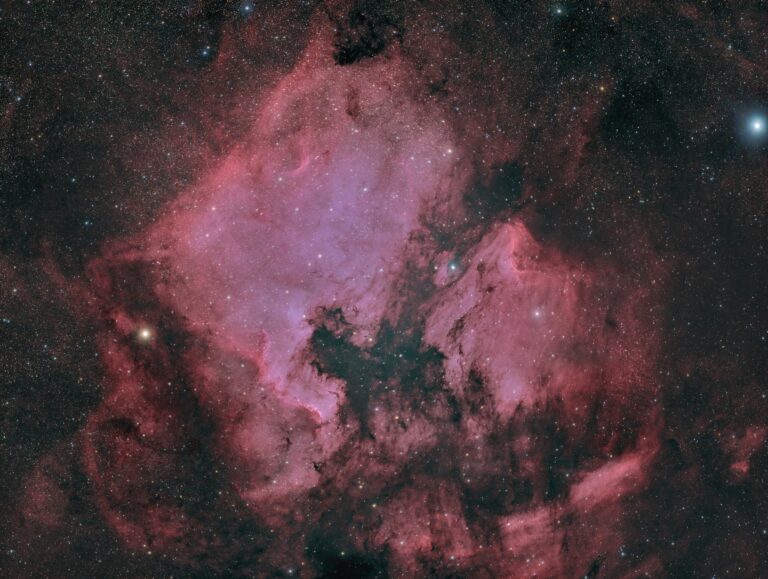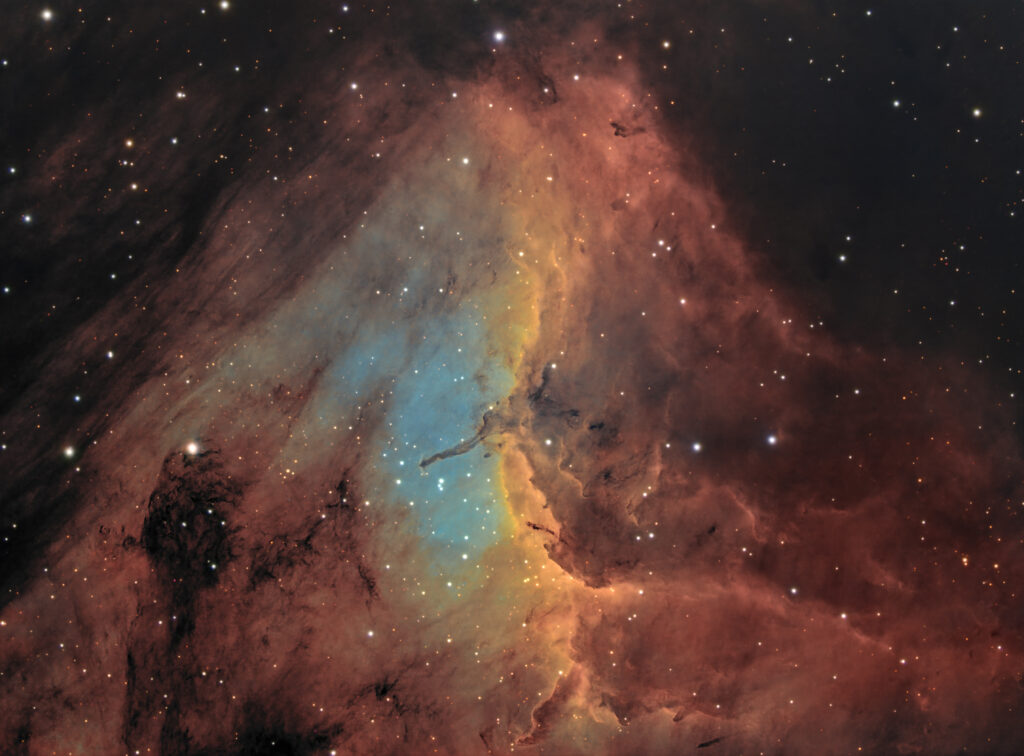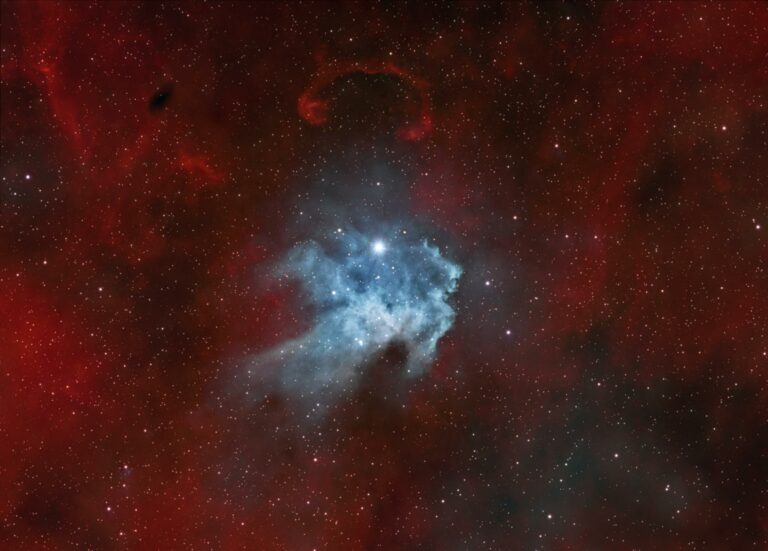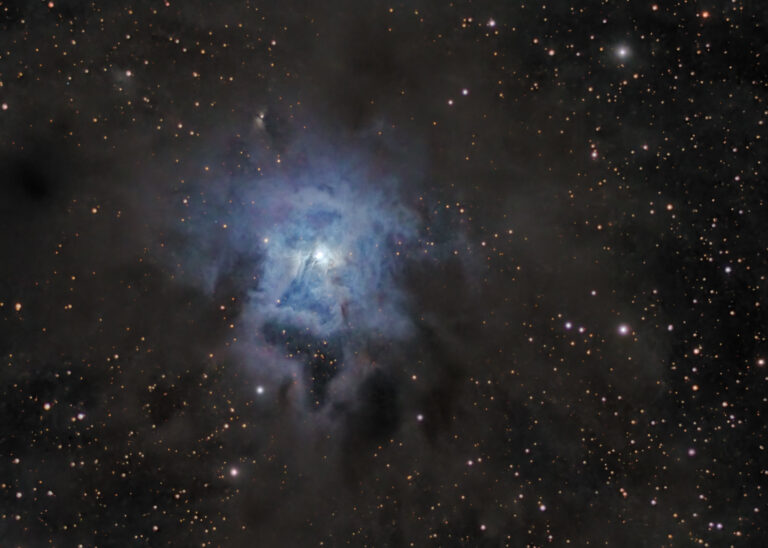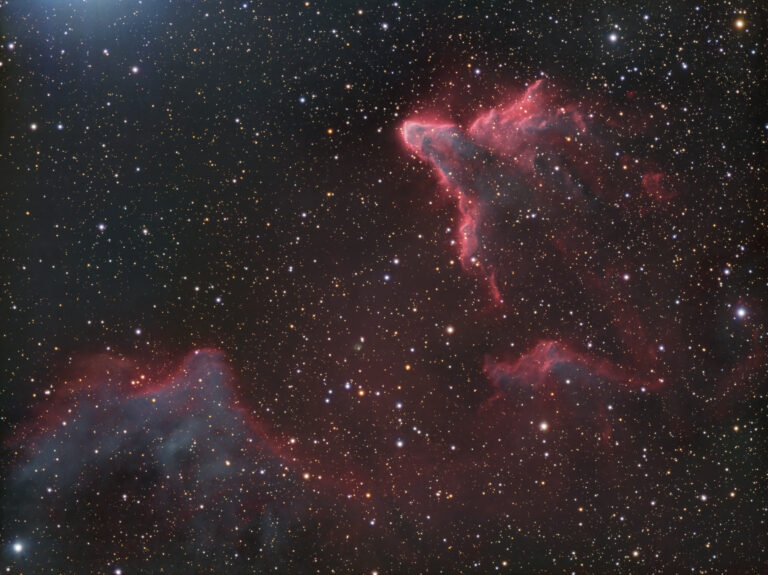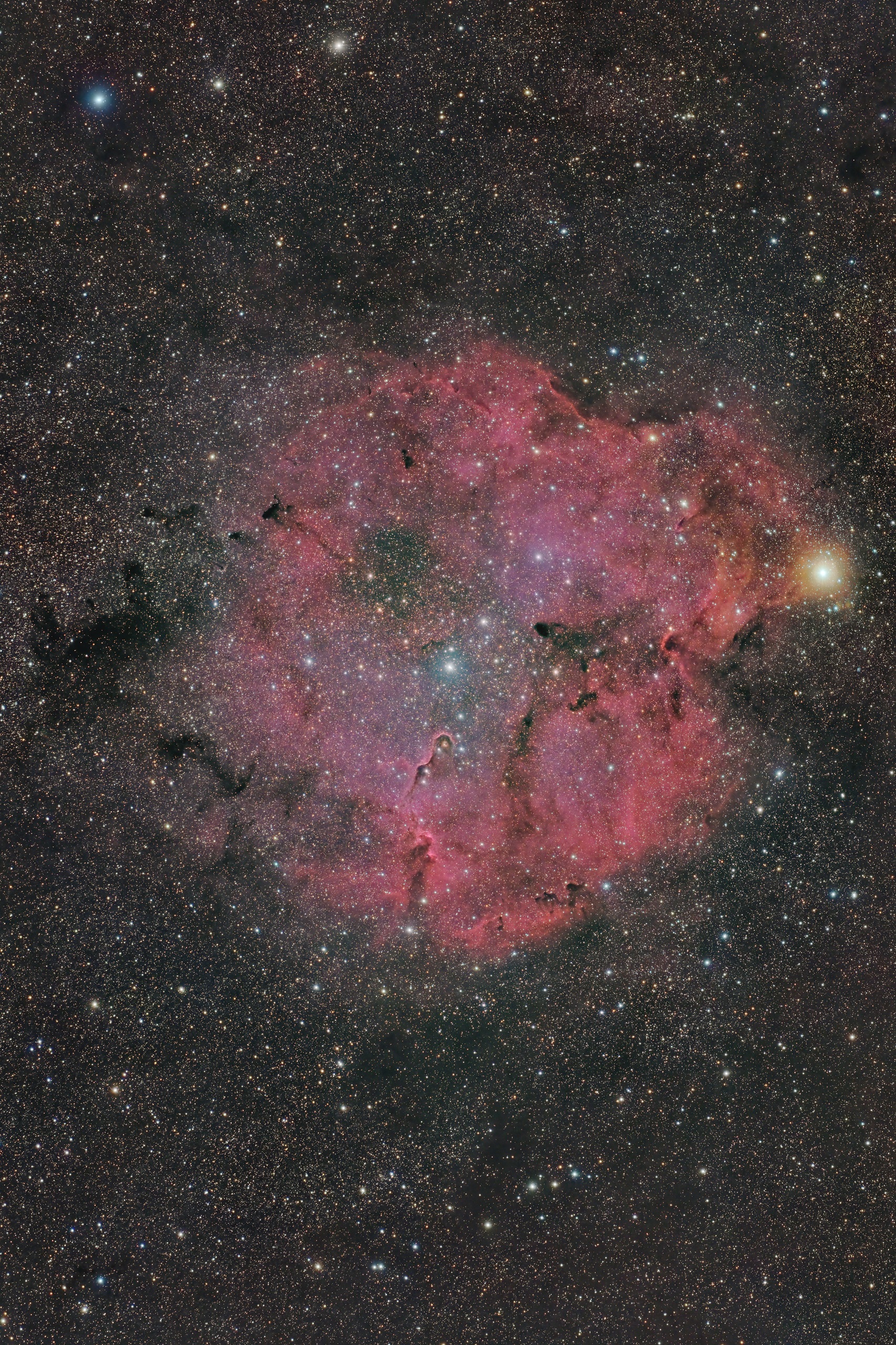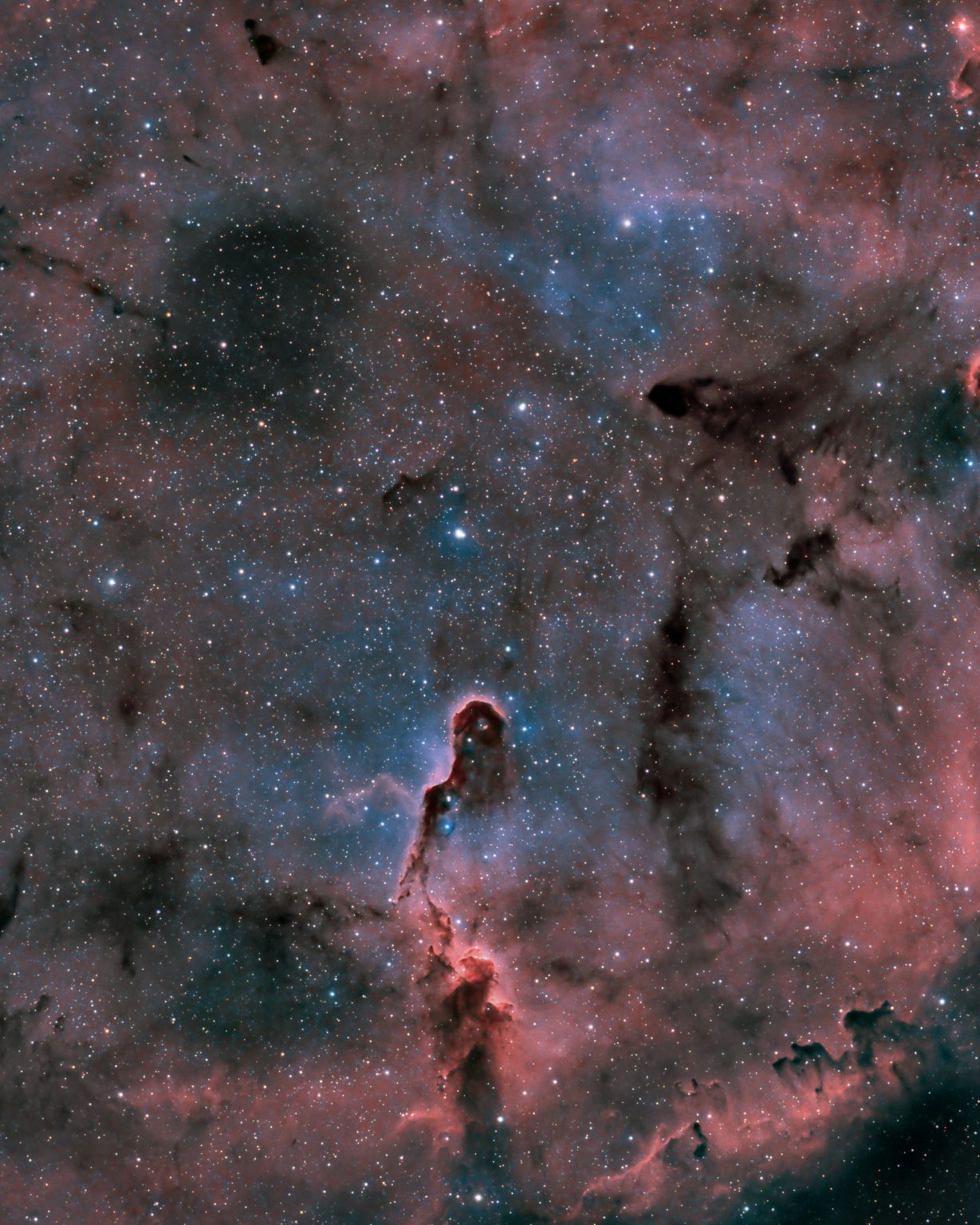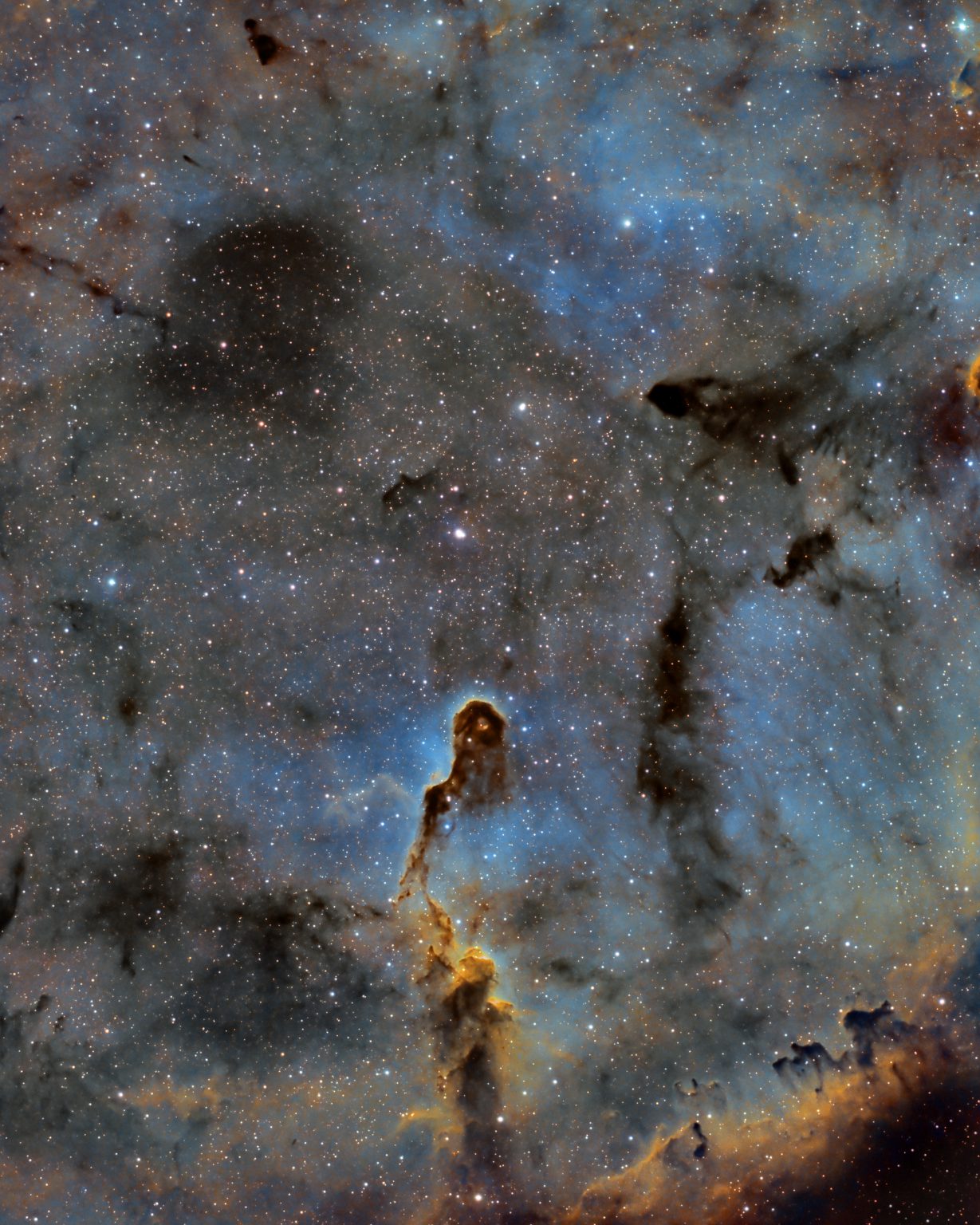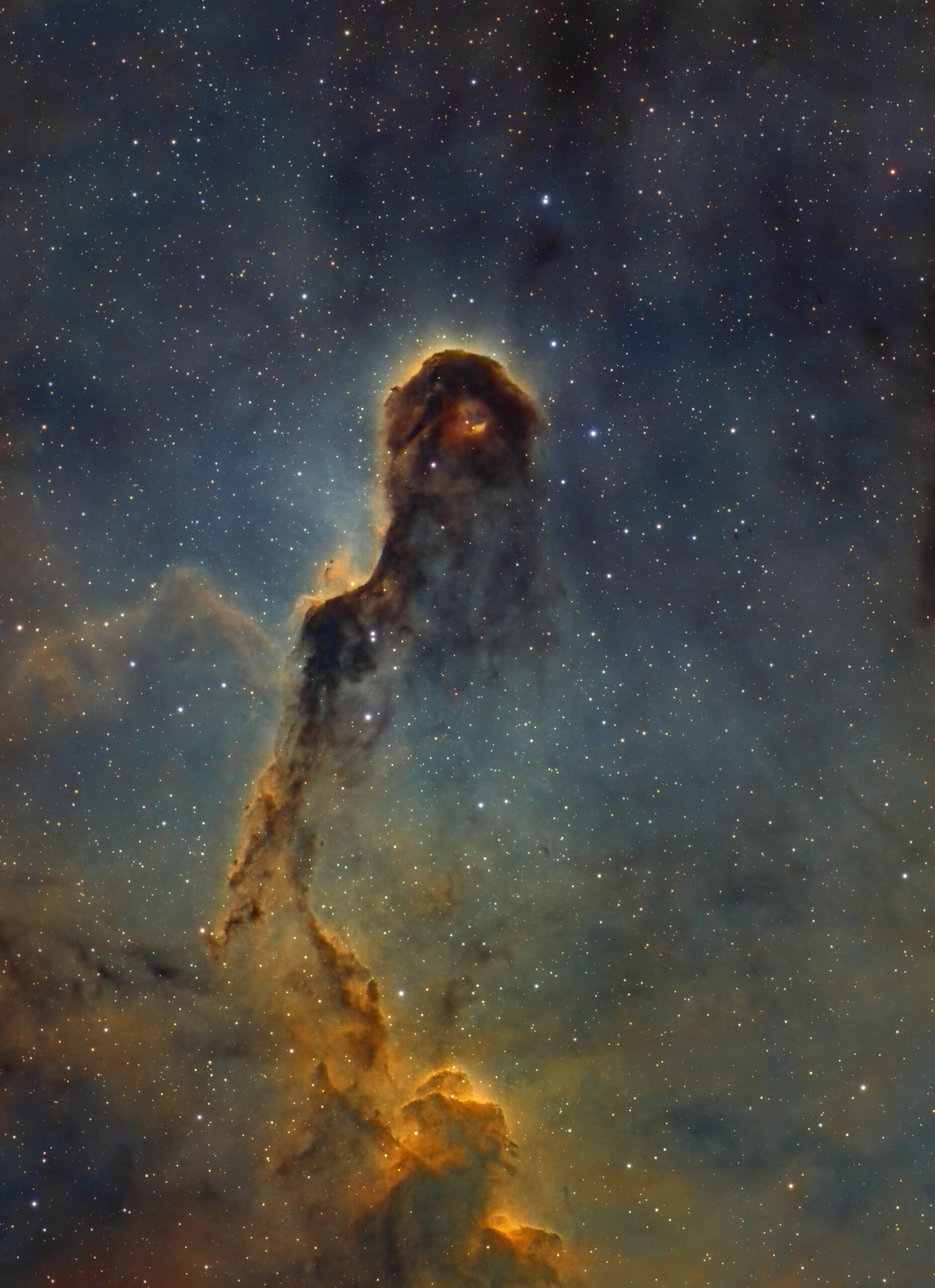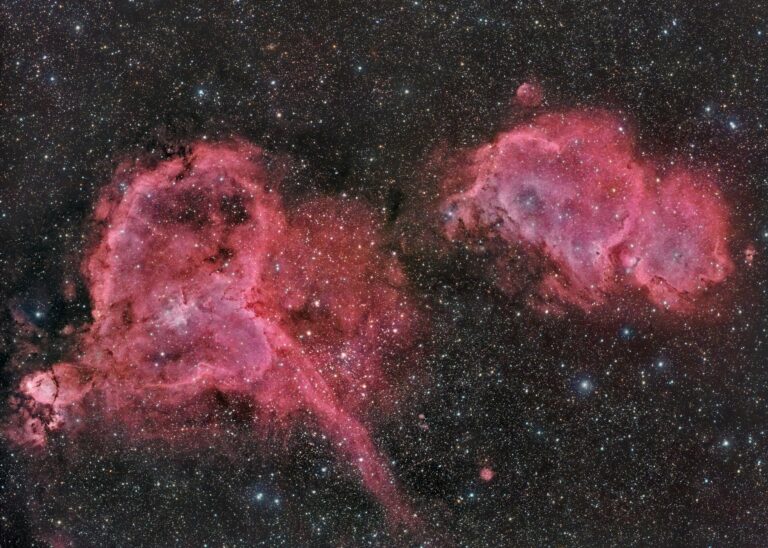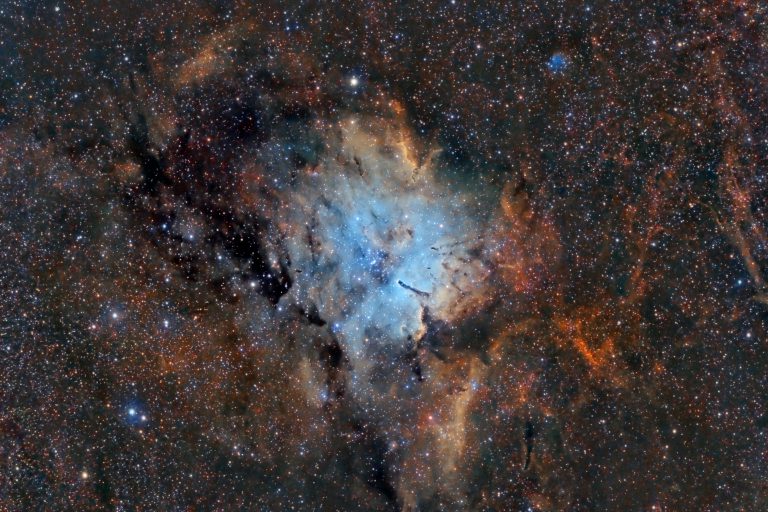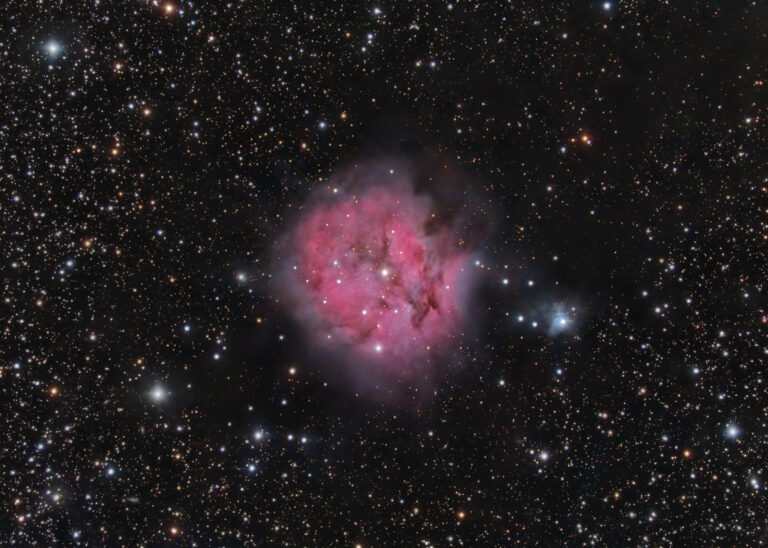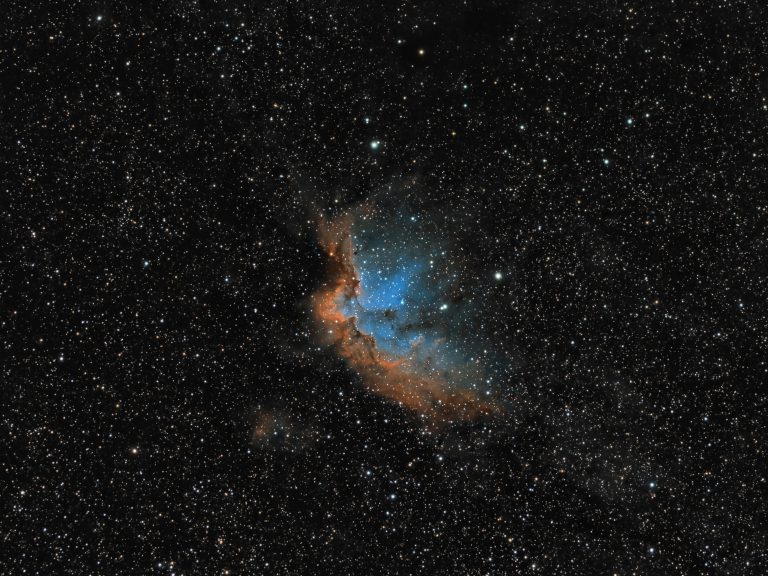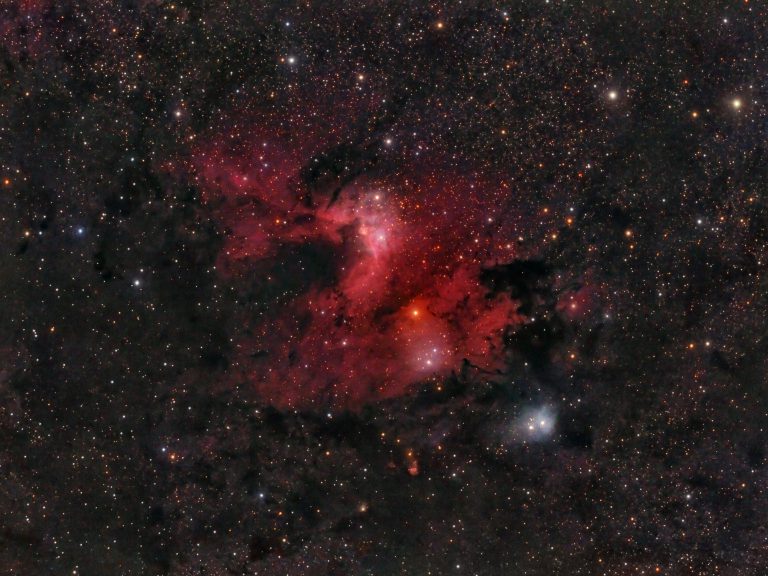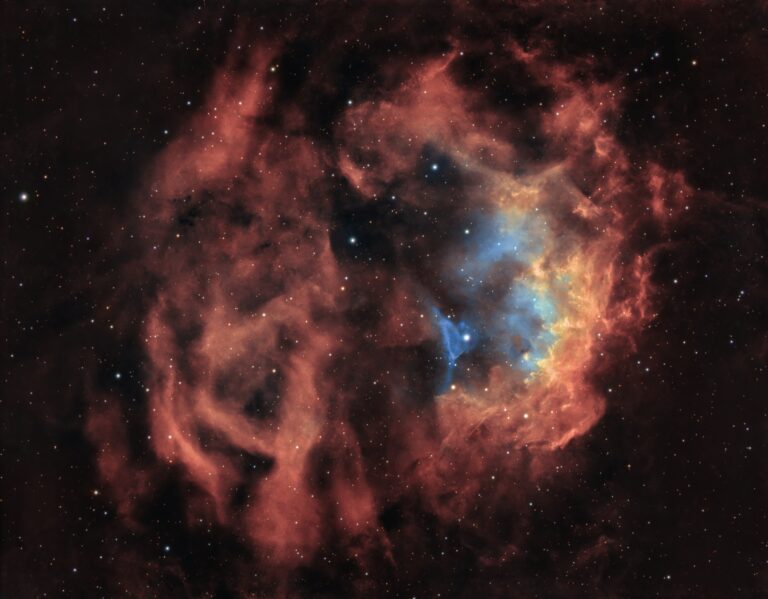Welcome to my nebula gallery!
m42 – 16th of December 2018 and 2020 – 6th of February 2021
- Zoom Canon 70-200 f/2.8 II IS L USM – TS 80/544mm APO quintuplet + focal reducer 0.67 f/=4.5
- Filters: L Halpha
- Camera: canon 6D – ZWO ASI1600MMPro
- L: 39 x 60s canon 6D (iso 1600)
- Halpha: 60 x 60s ZWO ASI1600MMPro and Canon lens zoom @200mm f/2.8
- Halpha: 47 x 37s ZWO ASI1600MMPro and TS 80/544mm
m42 – 16th of December 2020 – 6th of February 2021 – 13th of January 2022
- Zoom Canon 70-200 f/2.8 II IS L USM – TS 80/544mm APO quintuplet – TS 80/480mm APO triplet + field corrector TSflat2″
- Filters: LRGB Halpha
- Camera: ZWO ASI1600MMPro
- L: 10 x 60s
- RGB: 80 x 60s
- Halpha: 60 x 60s objectif @200mm f/2.8
- Halpha: 40 x 180s TS 80/480mm APO triplet
m42 – 17th of December 2018 – 6th of February 2020 – 6th of february 2021
- Celestron Celestar XLT 8″ + focal reducer 0.63, f/d=6.3 – TS 80/544mm APO quintuplet
- Filters: LRGB
- Camera: canon 6D – ZWO ASI290MC – ZWO ASI1600MM
- L: 39 x 60s canon 6D (iso 1600)
- L: 2000 x 0.5s ZWO ASI290MC (lucky imaging)
- RGB: 45 x 60s
On 4th of March 1769, Charles Messier included the Pleiades as No. 45 in his first list of nebulae and star clusters, published 1771. The Pleiades, or M(essier)45 cluster, are an open star cluster that can be seen from both hemispheres in the constellation Taurus. The accuracy of the cluster’s distance to Earth is still debated, however and according to the various technical instruments used, it is estimated to be around 444 light years.
The origin of the name “Pleiades” comes from Greek mythology: the Pleiades are seven sisters, daughters of Atlas and Pleioné: Asterope, Mérope (or Dryope, or Aero), Electra, Maïa, Taygète, Célaéno (or Selene) and Alcyone. Today there are around 3,000 stars in this cluster, a dozen of which are visible to the naked eye. It extends over 2 °, or the equivalent of four times the full Moon diameter. Its density is therefore relatively low compared to other open clusters.
The age of the cluster is estimated at 100 million years, but it should not live long since it should separate in 250 million years, in part due to its low density (here it is the life of the cluster and not that of the stars that compose it). The 9 brightest stars in the cluster are the names of the 7 sisters and their parents. Their magnitude is between 2.86 and 5.44, therefore accessible to the naked eye. Asterope has the particularity of being a double star.
The Pleiades are not only a open cluster but also considered as nebulae, blue-colored, which indicates that they are reflection nebulae, reflecting the light of the bright stars situated near (or within) them. The brightest of these nebulae is around Merope. Physically, the reflection nebula is probably part of the dust in a molecular cloud, unrelated to the Pleiades cluster, which happens to cross the cluster’s way. It is not a remnant of the nebula from which the cluster once formed, as can be seen from the fact that the nebula and cluster have different radial velocities, crossing each other with a relative velocity of 11 km/sec.(sources Wikipedia, obspm).
ngc 281 – 5/6/10th of november 2021 – 12th of june/15th of july and 9th of august 2024
- Celestron Fastar edgeHD 8″ + focal reducer 0.7, f/d=7 – TS 80/480mm APO triplet + field corrector TSflat2″
- Filters: RGB Halpha OIII SII
- Camera: ZWO ASI1600MMPro
- RGB: 90 x 60s
- Halpha: 46 x 300s
- OIII: 48 x 300s
- SII: 48 x 300s
ngc 6888 et pn g75.5 + 1.7 – 5th of september 2019 – 15/16th of june and 1/19th of july and 13th of august 2021
- TS 80/480mm APO triplet + field corrector TSflat2″
- Filters: L Halpha OIII
- Camera: canon6D – ZWO ASI1600MMPro
- L: 7 x 180s canon6D (iso 1600)
- Halpha: 33 x 300s and 20 x 180s
- OIII: 44 x 300s, 20 x 180s, 18 x 600s
ngc 6888 et pn g75.5 + 1.7 – 22/23th of July and 6/8th of october 2022 – 3rd/9th/10th of july 2025(4 panels)
- Celestron Fastar edgeHD 8″ + focal reducer 0.7, f/d=7 + TS 80/480mm APO triplet + field corrector TSflat2″ –
- Filters: L Halpha OIII
- Camera: canon6D – ZWO ASI1600MMPro
- L: 7 x 180s canon6D (iso 1600)
- Halpha: 20 x 180s, 74 x 300s and 29 x 600s
- OIII: 148 x 300s and 46 x 600s
ngc 6888 – 11/21st of August and 5th of september 2019 – 21st of July and 7/16th of september 2020 – 9th of july 2022 – 25th of august, 3rd of september and 9th of october 2023 – 4th of july 2025
- Celestron Fastar edgeHD 8″ + focal reducer 0.7, f/d=7 + Celestron Celestar XLT 8″ + focal reducer 0.63, f/d=6.3 + TS 80/544mm APO quintuplet
- Filters: LRGB Halpha OIII
- Camera: canon6D – ZWO ASI1600MMPro
- L: 5 x 180s canon6D (iso 1600)
- RGB: 30 x 180s
- Halpha: 59 x 60s and 23 x 300s
- OIII: 234 x 60s, 20 x 180s, 12 x 300s, 49 x 600s
ngc 7635 – 17/20th of may 2020 – 1st of december 2022
- Celestron Celestar XLT 8″ + focal reducer 0.63, f/d=6.3 + Zoom Canon 70-200 f/2.8 II IS L USM
- Celestron Fastar edgeHD 8″ + focal reducer 0.7, f/d=7
- Filters: LRGB Halpha OIII
- Camera: ZWO ASI1600MMPro
- L: 50 x 60s
- RGB: 45 x 60s
- Halpha: 110 x 60s
- OIII: 100 x 60s
ngc 7635 et SH2-157 – 20th of may 2020
- Zoom Canon 70-200 f/2.8 II IS L USM
- Filters: RGB Halpha
- Camera: ZWO ASI1600MMPro
- RGB: 45 x 60s Canon lens zoom @200mm f/2.8
- Halpha: 30 x 60s Canon lens zoom @200mm f/2.8
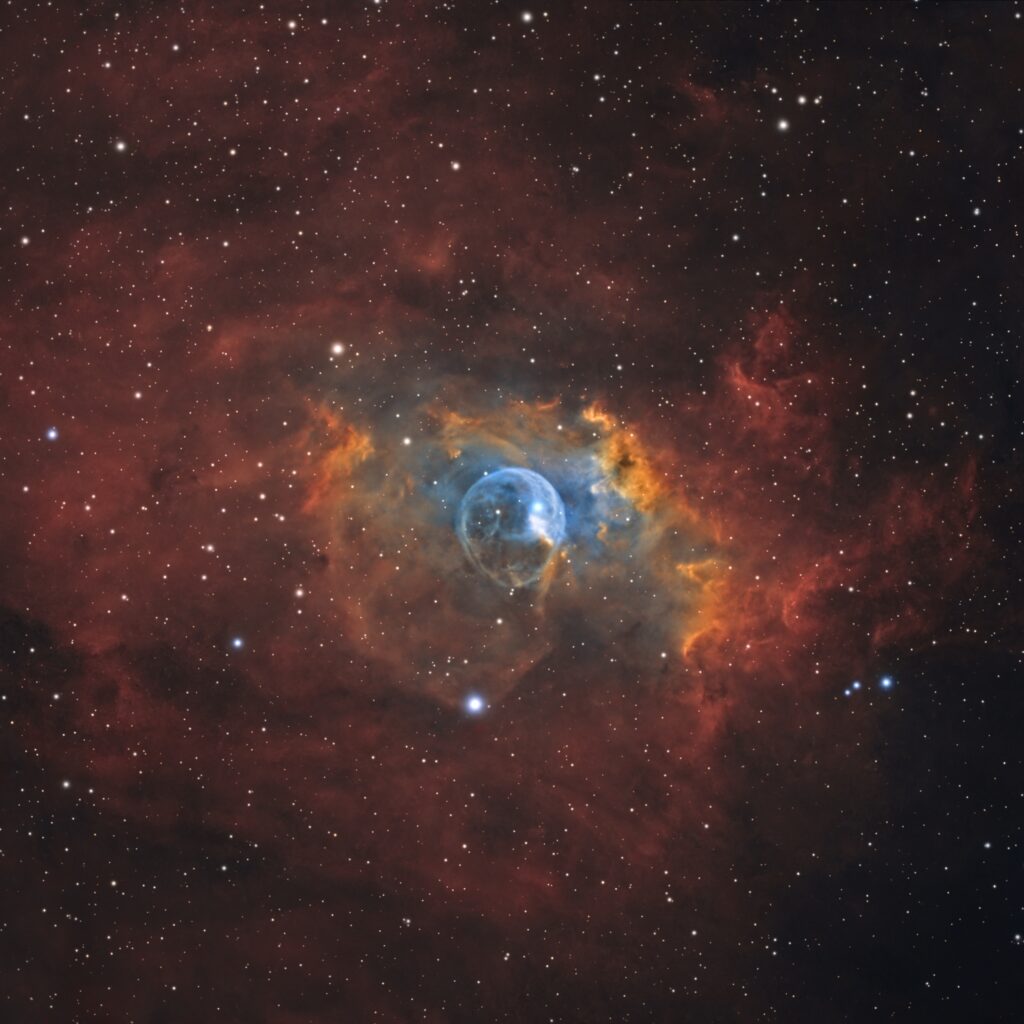
ic 1396 – 18th of september 2020 – 6/7th september and 3rd of october 2021
- Zoom Canon 70-200 f/2.8 II IS L USM – TS 80/480mm APO triplet + field corrector TSflat2″
- Filters: RGB Halpha OIII SII
- Camera: ZWO ASI1600MMPro
- RGB: 96 x 37s Canon lens zoom @200mm f/2.8
- Halpha: 30 x 300s
- OIII: 40 x 300s
- SII: 40 x 300s
vdb 142 – 22th of august 2019 – 18th of september 2020 – 7/11th of june and 14/17th september 2024
- Celestron Celestar XLT 8″ + focal reducer 0.63, f/d=6.3 and Celestron Fastar edgeHD 8″ + focal reducer 0.7, f/d=7
- Filters: RGB Halpha OIII SII
- Camera: ZWO ASI1600MMPro
- RGB: 120 x 60s
- Halpha: 22 x 300s
- OIII: 46 x 300s
- SII: 48 x 300s
